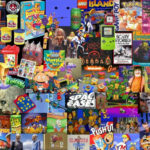The 1990s were a seismic shift in music, a decade where genres collided and new sounds emerged from every corner of the cultural landscape. Radio waves and MTV screens pulsed with an unprecedented variety of beats, from the raw angst of grunge to the infectious rhythms of gangsta rap, the vibrant energy of dancehall, and the resurgence of disco. Riot grrrl punk challenged norms, while TRL fueled the rise of mall-pop sensations. Electronica splintered into countless subgenres, and the Wu-Tang Clan’s influence spread like wildfire. For music lovers, the Nineties were an overflowing feast, a decade so rich in sound that no single list could ever fully capture its essence. Even a deep dive into the summer of ’94 alone would unearth hundreds of gems. However, this curated selection of 50 essential songs aims to highlight the most significant moments of this explosive era – the chart-toppers, the hidden treasures, the cult favorites, the dance floor anthems, the guitar-driven rock songs, and the karaoke staples that defined the Top Songs Of The 90s. Let the entertainment begin.
Fuzzy, “Flashlight” (1994)
Emerging seemingly from nowhere and then fading back into obscurity, Fuzzy, a Boston-based band, gifted the 90s with one perfect, yet largely unheard, song. “Flashlight” is a quintessential quasi-grunge track featuring a melancholic female vocalist singing barely discernible lyrics about navigating through darkness with a flashlight. Lost in the shuffle of the post-Nirvana major-label gold rush, this track was a gem discovered primarily by those tuning into MTV’s 120 Minutes during its late-night programming. It begs the question: how many other brilliant quasi-grunge songs remain buried on forgotten albums from this era, waiting for rediscovery? While few may reach the heights of “Flashlight,” the search for these hidden treasures is a worthwhile endeavor for any 90s music aficionado.
Britney Spears, “Sometimes” (1999)
 Britney Spears in a white outfit, standing on a beach, with a clear blue sky and ocean behind her.
Britney Spears in a white outfit, standing on a beach, with a clear blue sky and ocean behind her.
“Sometimes” was more than just Britney Spears’ second hit; it was her first crucial comeback single. After the explosive debut of “…Baby One More Time,” some questioned the longevity of the teen pop sensation. “Sometimes” became a Total Request Live staple, solidifying Britney’s status as a lasting force and setting the template for a new generation of pop stars. This late 90s hit signaled the dawn of a new century of pop music, proving Britney was not just a fleeting trend, but a defining artist of the era and beyond.
The Offspring, “Self Esteem” (1994)
The Offspring, hailing from Orange County’s hardcore scene, achieved massive platinum success with “Self Esteem,” a surprisingly catchy tune exploring themes of masochism in relationships. The song’s iconic line, “I may be dumb, but I’m not a dweeb,” resonated deeply with audiences and remains surprisingly relevant even today. It’s a relatable anthem for anyone who’s ever felt taken advantage of in a relationship, or perhaps, as the song suggests, if you are that “dumb dweeb” in the scenario. The song’s enduring appeal speaks to the universal experiences of love, frustration, and self-awareness, making it a standout track from the 90s alternative rock scene.
Selena, “Fotos y Recuerdos” (1994)
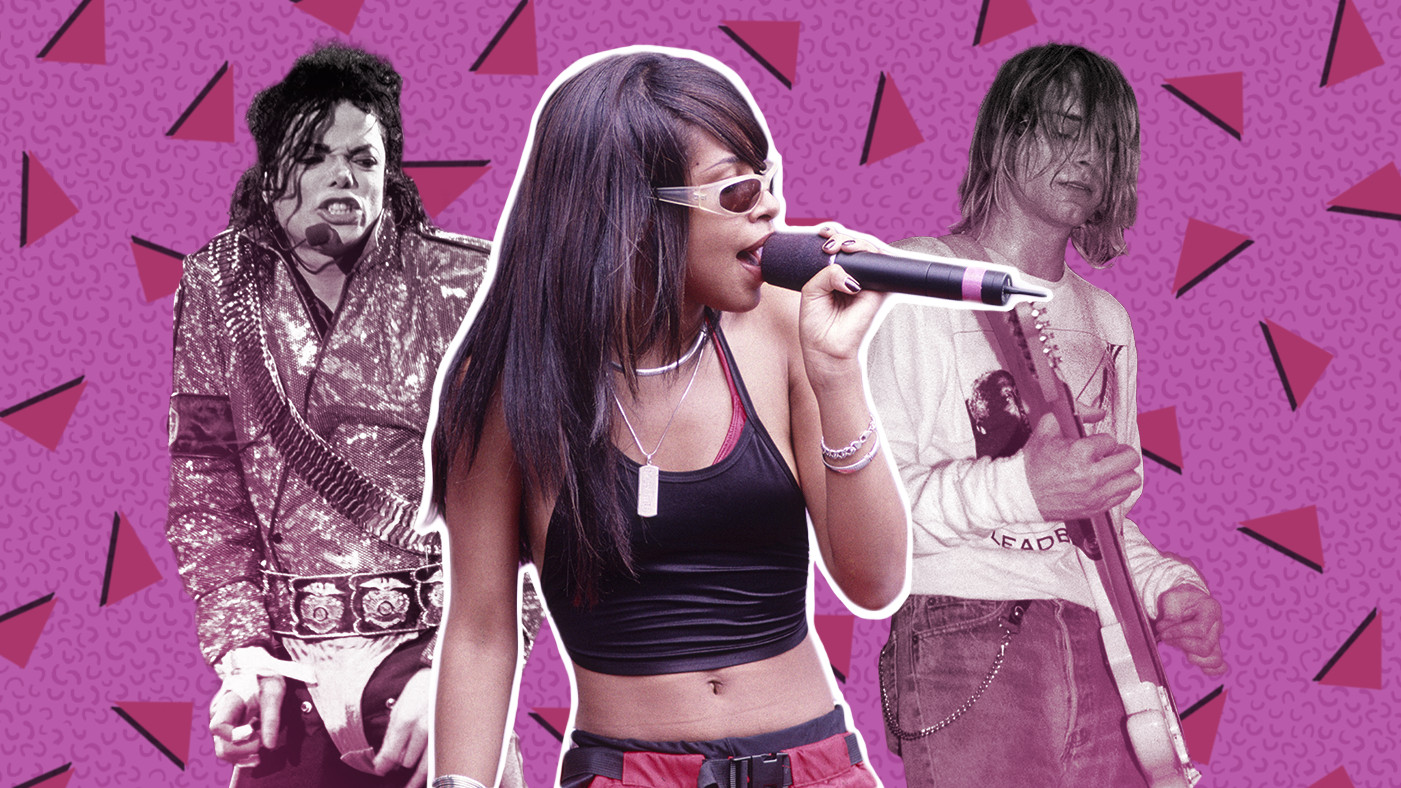 Selena in a black sequined bustier and jacket, with dark curly hair and hoop earrings, singing into a microphone on stage.
Selena in a black sequined bustier and jacket, with dark curly hair and hoop earrings, singing into a microphone on stage.
Selena, the beloved Tejano music icon, masterfully reimagined The Pretenders’ classic “Back on the Chain Gang” with “Fotos y Recuerdos.” Translated into Spanish, the song became a massive hit, reaching the Top Five on the Billboard Latin charts in the week of her tragic passing. This poignant reinvention showcased Selena’s versatility and her ability to bridge musical worlds, blending rock influences with her signature Tejano sound. “Fotos y Recuerdos” stands as a testament to her enduring legacy and her profound impact on Latin music in the 90s and beyond.
Silver Jews, “Random Rules” (1998)
“Random Rules” by Silver Jews conjures a vivid, if slightly melancholic, scene: a honky-tonk lounge in the afterlife, nearing closing time, with this song playing softly on the jukebox. David Berman’s distinctive, drawling vocals deliver fractured, barstool philosophy, creating an atmosphere of introspective contemplation. This track exemplifies the Silver Jews’ unique brand of indie rock, blending wry humor with poignant observations on life and loneliness. It’s a song for late nights and quiet reflection, a perfect example of the understated brilliance that defined much of 90s indie music.
Lil Kim With Lil Cease, “Crush on You (Remix)” (1997)
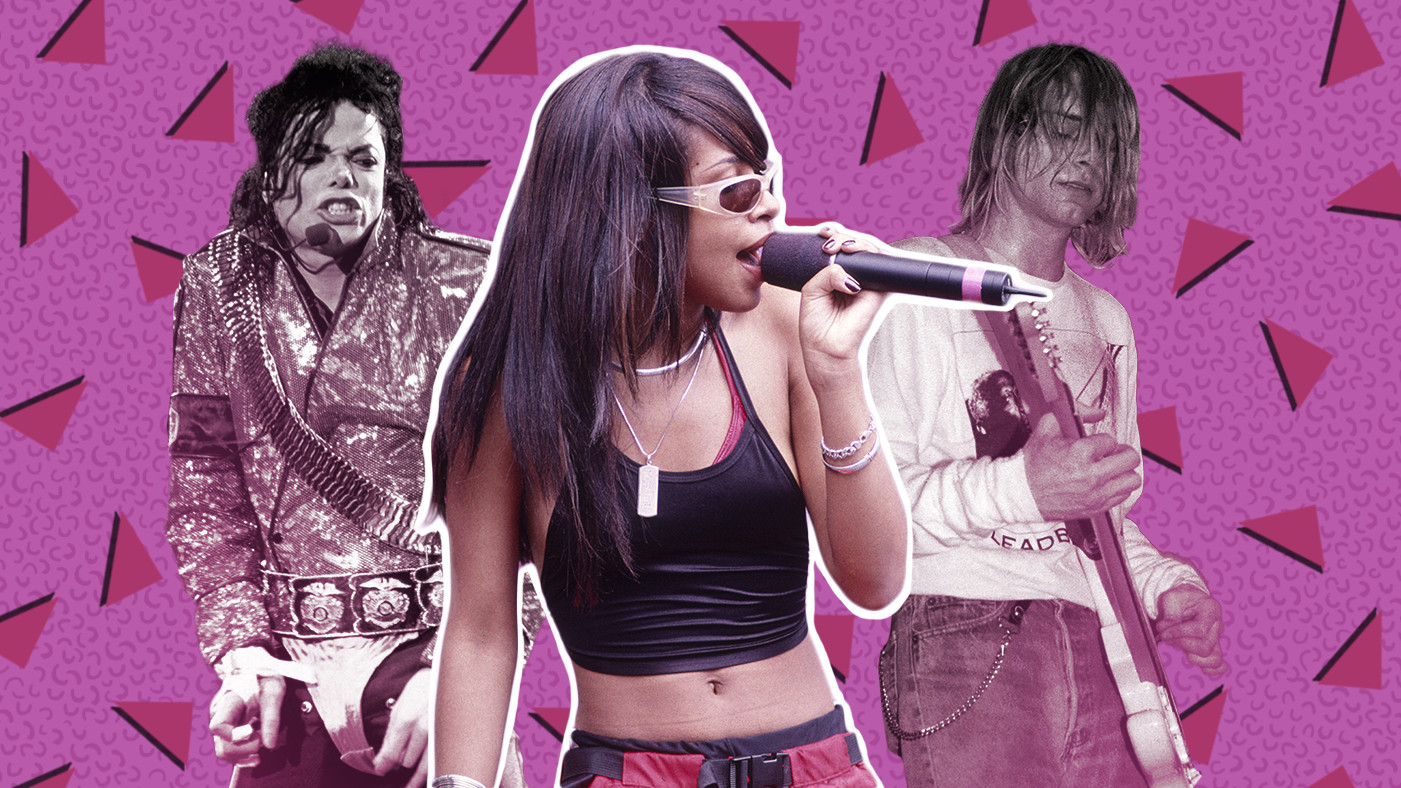 Lil Kim with pink hair and Lil Cease, standing close together and looking towards the camera, with a slightly blurred background.
Lil Kim with pink hair and Lil Cease, standing close together and looking towards the camera, with a slightly blurred background.
“Crush on You (Remix)” by Lil Kim featuring Lil Cease is the quintessential Bad Boy Records anthem. Built around a strangely haunting synth loop and featuring Lil Cease confidently stepping into Biggie’s shadow, the track is elevated by the undeniable bravado of Lil Kim, the Queen Bee herself. Showcasing her signature style, complete with extravagant wigs and furs, Lil Kim commands attention and asserts her dominance in the male-dominated hip-hop landscape. The iconic call-and-response, “Shall I proceed?” “Yes, indeed!” perfectly encapsulates the song’s confident and playful energy, making it a defining moment in 90s hip hop.
Stereolab, “Cybele’s Reverie” (1996)
Stereolab, the European avant-garde pop collective, posed the musical question: Voulez vous coucher avec le revolution? Known for their albums filled with lush, vintage-keyboard-driven agitprop trance-prog, “Cybele’s Reverie” stands as their magnum opus. This track encapsulates Stereolab’s signature blend of hypnotic rhythms, retro-futuristic sounds, and socio-political undertones. It’s a mesmerizing and intellectually stimulating piece of music, representative of the more experimental and boundary-pushing sounds that thrived in the 90s alternative scene.
Supergrass, “Alright” (1995)
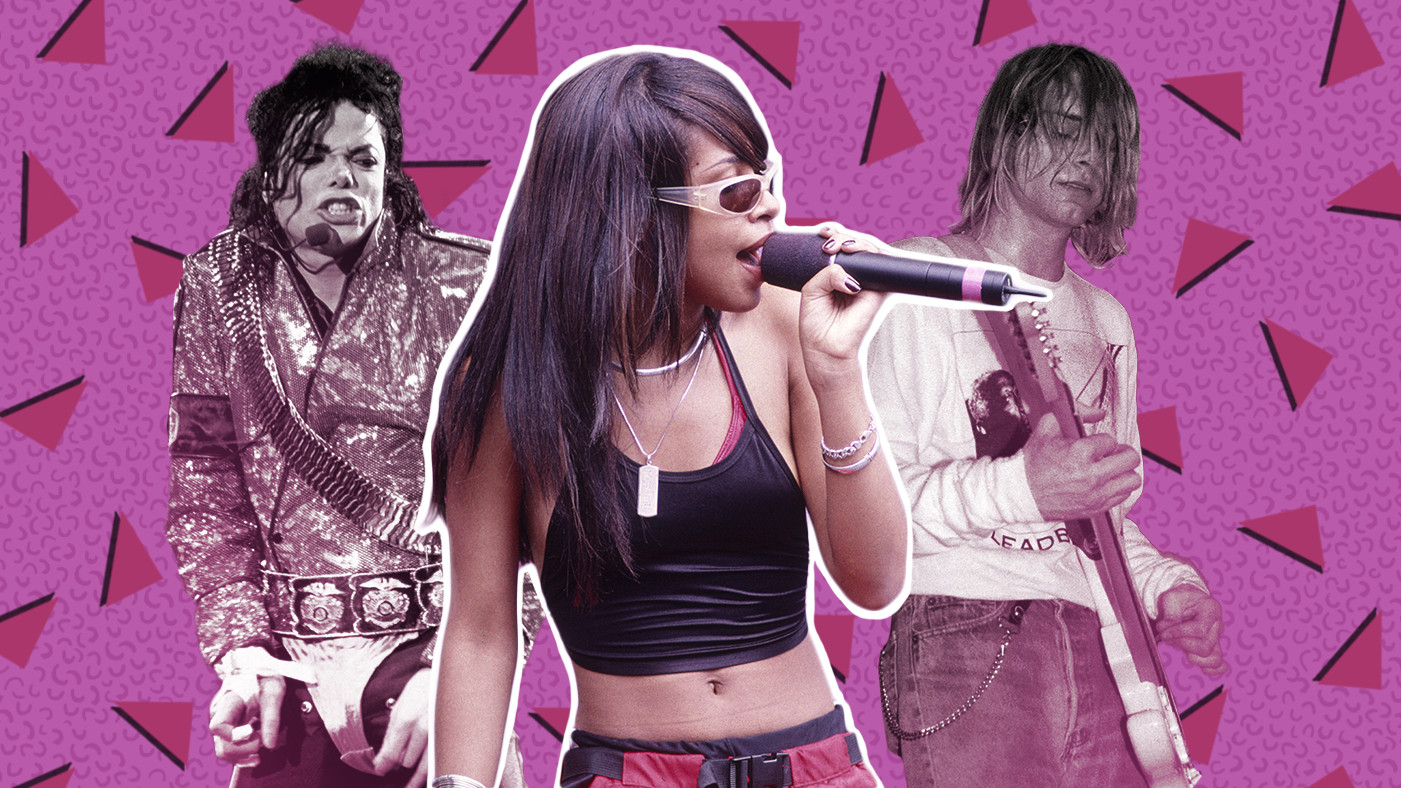 Supergrass band members jumping in the air in a black and white photo, with a street and buildings in the background.
Supergrass band members jumping in the air in a black and white photo, with a street and buildings in the background.
Choosing just one song from the iconic Clueless soundtrack is a near-impossible task, much like trying to extract profound meaning from a Pauly Shore film. However, Supergrass’ “Alright” perfectly captures the youthful exuberance and carefree spirit of the 90s. Featured prominently in Clueless, this Britpop anthem became synonymous with the decade’s slacker generation, celebrating youthful abandon and the joys of simply being “alright.” Its infectious energy and optimistic vibe made it a defining song of the mid-90s.
Ace of Base, “The Sign” (1994)
Ace of Base, the world’s most successful Swedish reggae-influenced pop group, achieved global superstardom with “The Sign.” The lyrics, while undeniably catchy, possess a slightly mystical and grammatically unconventional quality, as if crafted without the assistance of a native English speaker (“Life is demanding/Without understanding” – undeniably true). This quirky charm, combined with its infectious reggae-pop groove, propelled “The Sign” to international success, becoming a quintessential example of the unique and often globally-minded pop music that flourished in the 90s.
Sophie B. Hawkins, “Damn I Wish I Was Your Lover” (1992)
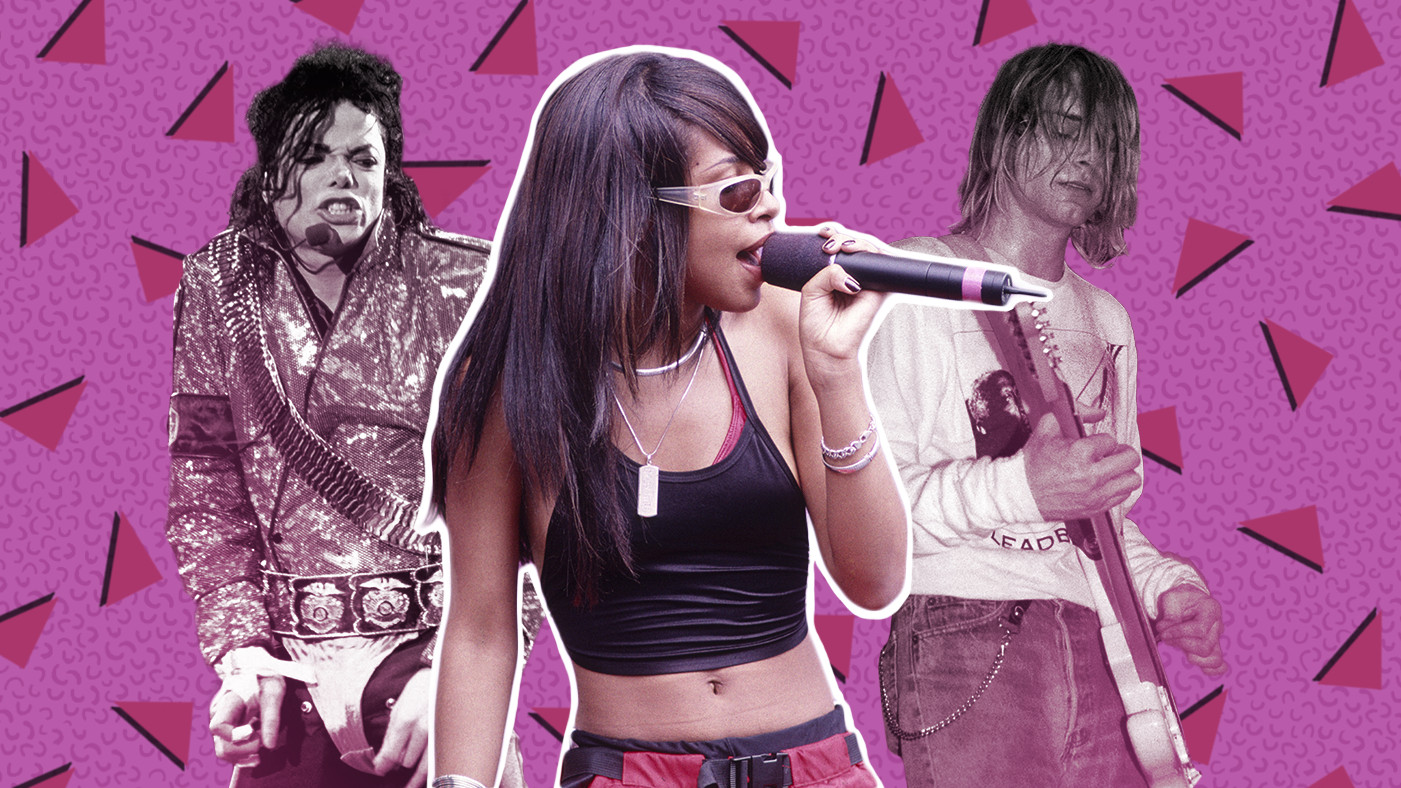 Sophie B. Hawkins with curly brown hair, wearing a black top and jeans, playing a guitar and singing into a microphone on stage.
Sophie B. Hawkins with curly brown hair, wearing a black top and jeans, playing a guitar and singing into a microphone on stage.
Sophie B. Hawkins, channeling a bohemian sex priestess persona, delivers a powerful and emotionally raw performance in “Damn I Wish I Was Your Lover.” The song explores the agony of unrequited desire with intense vulnerability and passion. Hawkins’s soulful vocals and the song’s evocative lyrics made “damn” feel like a truly weighty and emotionally charged word. This 90s hit showcased a more introspective and emotionally complex side of pop music, resonating with listeners who appreciated its raw honesty.
Big Pun Feat. Joe, “Still Not a Player” (1998)
“Still Not a Player” is pure Uptown, New York City. The late, great Bronx MC, Big Pun, joins forces with R&B crooner Joe over a smooth lovers-rock piano melody. Together, they serenade “highly intelligent bachelorettes” with a pan-cultural party chant (“boricua, morena“) and suggestive lyrics. This track seamlessly blends hip-hop bravado with R&B smoothness, showcasing Big Pun’s lyrical prowess and Joe’s velvety vocals. “Still Not a Player” became a late 90s anthem, solidifying Big Pun’s legacy as a rap icon, even though he tragically left us too soon. R.I.P., Pun – he may not have been a player, but he undoubtedly conquered the rap game.
Sebadoh, “Brand New Love” (1992)
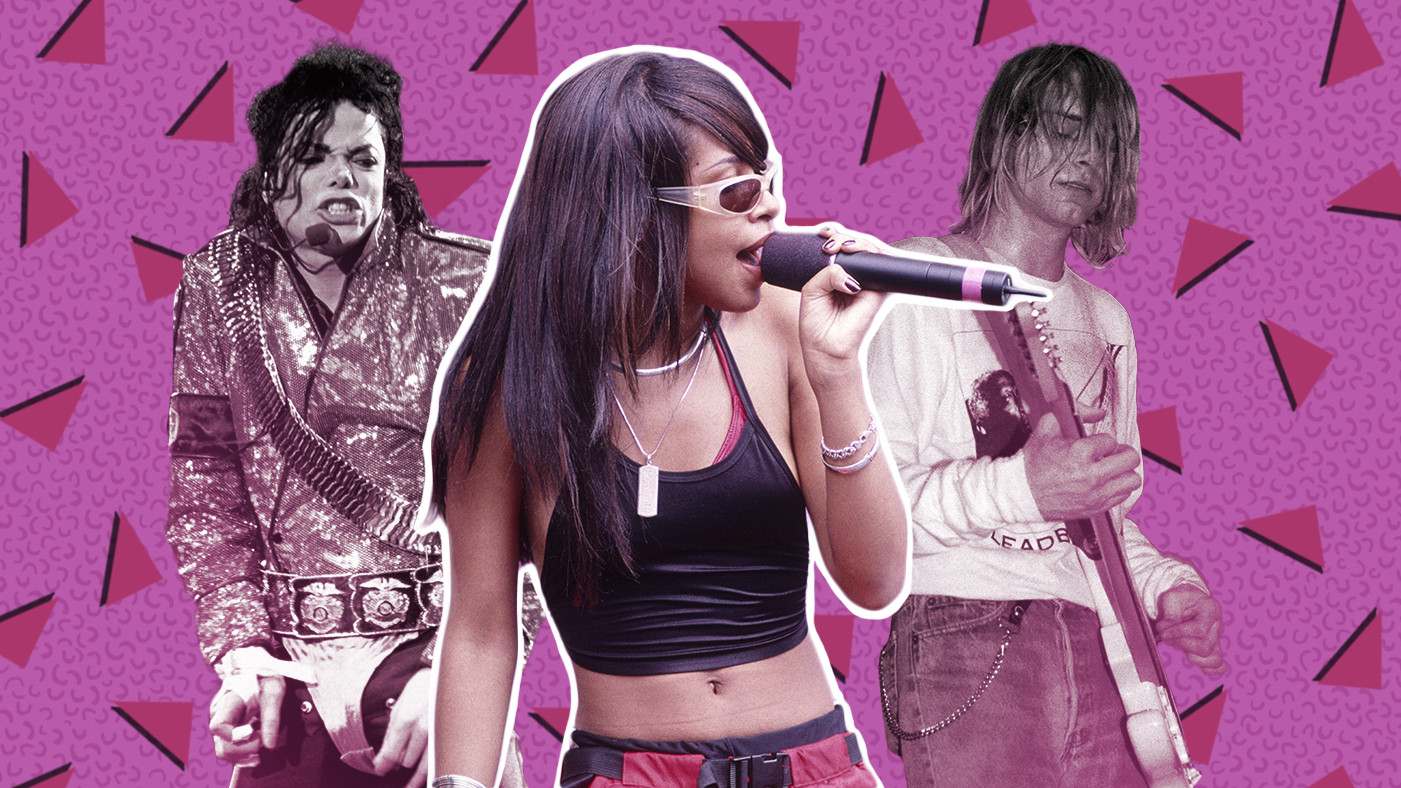 Sebadoh band members, Lou Barlow in the center with long hair and glasses, playing instruments on stage in a dimly lit venue.
Sebadoh band members, Lou Barlow in the center with long hair and glasses, playing instruments on stage in a dimly lit venue.
Sebadoh, the lo-fi punk pioneers, took a significant step towards vulnerability and emotional openness with “Brand New Love.” This folk-infused ballad, transitioning into feedback-laden intensity, explores the daunting yet exhilarating experience of opening up to new feelings. The song captures the tentative steps of shedding bitterness and embracing connection, symbolized by the simple act of smiling back at a stranger across a room. “Brand New Love” represents the raw and emotionally honest songwriting that was a hallmark of 90s indie rock.
Geto Boys, “Mind Playing Tricks on Me” (1991)
“Mind Playing Tricks on Me” by Geto Boys is arguably the most chilling and psychologically complex gangsta rap narrative ever recorded. The song delves into themes of paranoia, mental instability, and the constant threat of violence in a stark and unflinching manner. Ending with Willie D’s visceral cries of anguish over a haunting jazz-fusion loop, the track leaves a lasting impression of unease and dread. “Mind Playing Tricks on Me” is a powerful and disturbing masterpiece that pushed the boundaries of hip-hop storytelling in the early 90s.
New Radicals, “You Get What You Give” (1998)
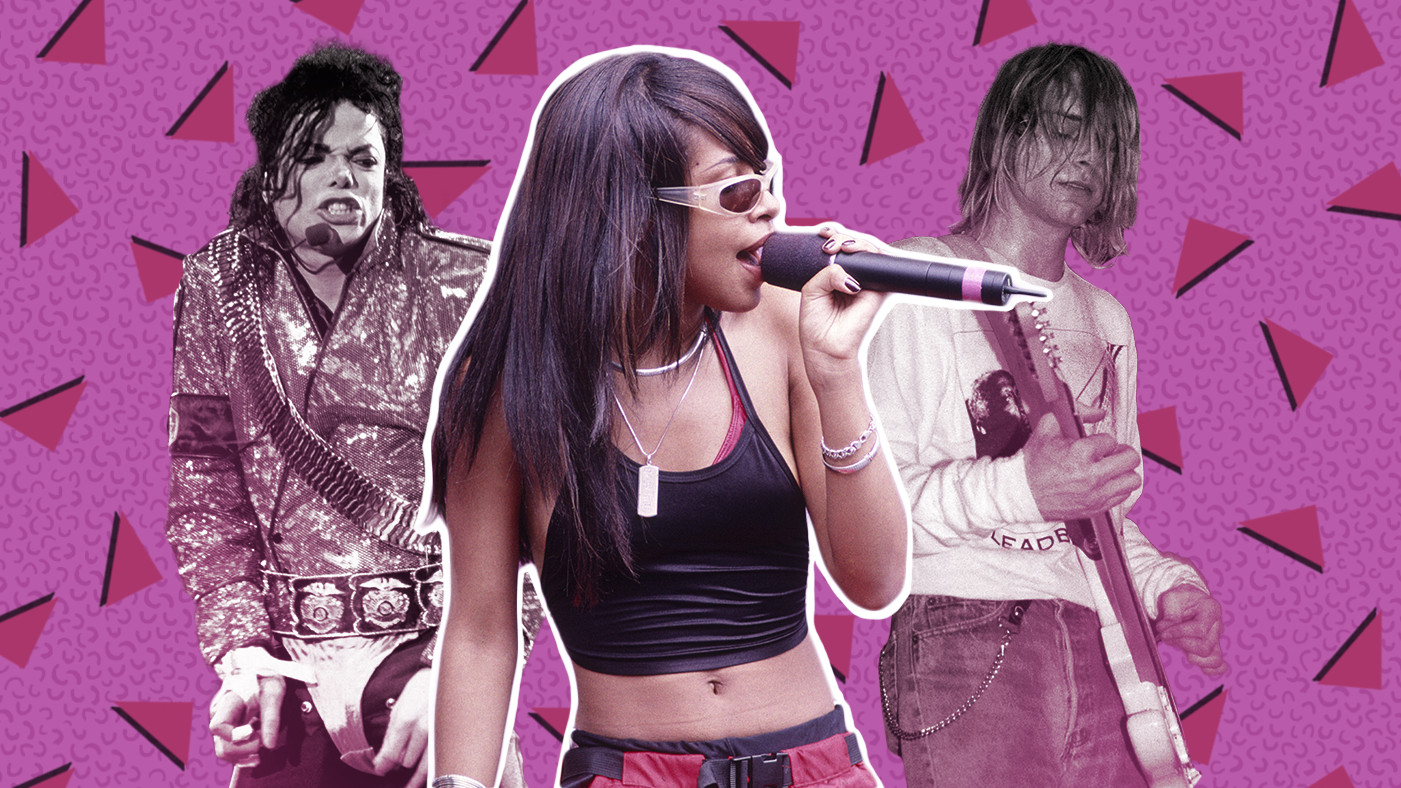 Gregg Alexander of New Radicals wearing a bucket hat, singing and gesturing with his hand, in a brightly lit outdoor setting.
Gregg Alexander of New Radicals wearing a bucket hat, singing and gesturing with his hand, in a brightly lit outdoor setting.
New Radicals epitomized the one-hit wonder phenomenon with “You Get What You Give,” a gloriously anthemic prom-ready track. Complete with a bucket-hat-wearing frontman, a mall-riot-themed music video, and cheeky insults directed at Beck, Hanson, Courtney Love, and Marilyn Manson, the song was a cultural moment. And then, just as quickly as they arrived, New Radicals vanished. Years later, the New Radicals frontman, Gregg Alexander, received an Oscar nomination for his work on the film Begin Again in 2015, tragically forgoing the opportunity to revive the iconic bucket hat on the red carpet. “You Get What You Give” remains a beloved 90s anthem, a testament to the power of a perfectly crafted pop song.
Portishead, “Glory Box” (1994)
Portishead’s “Glory Box” defines elegant trip-hop melancholy. Beth Gibbons’s haunting vocals, drenched in sorrow, intertwine with a timeless sample of Isaac Hayes’s cheeba-infused funk from the Seventies. This sample, resurrected in 2015 by Alessia Cara (who wasn’t even born when “Glory Box” was released), underscores the song’s enduring influence. “Glory Box” is a masterclass in atmospheric and emotionally resonant music, a cornerstone of the trip-hop genre and a standout track from the 90s alternative scene.
Sheryl Crow, “If It Makes You Happy” (1996)
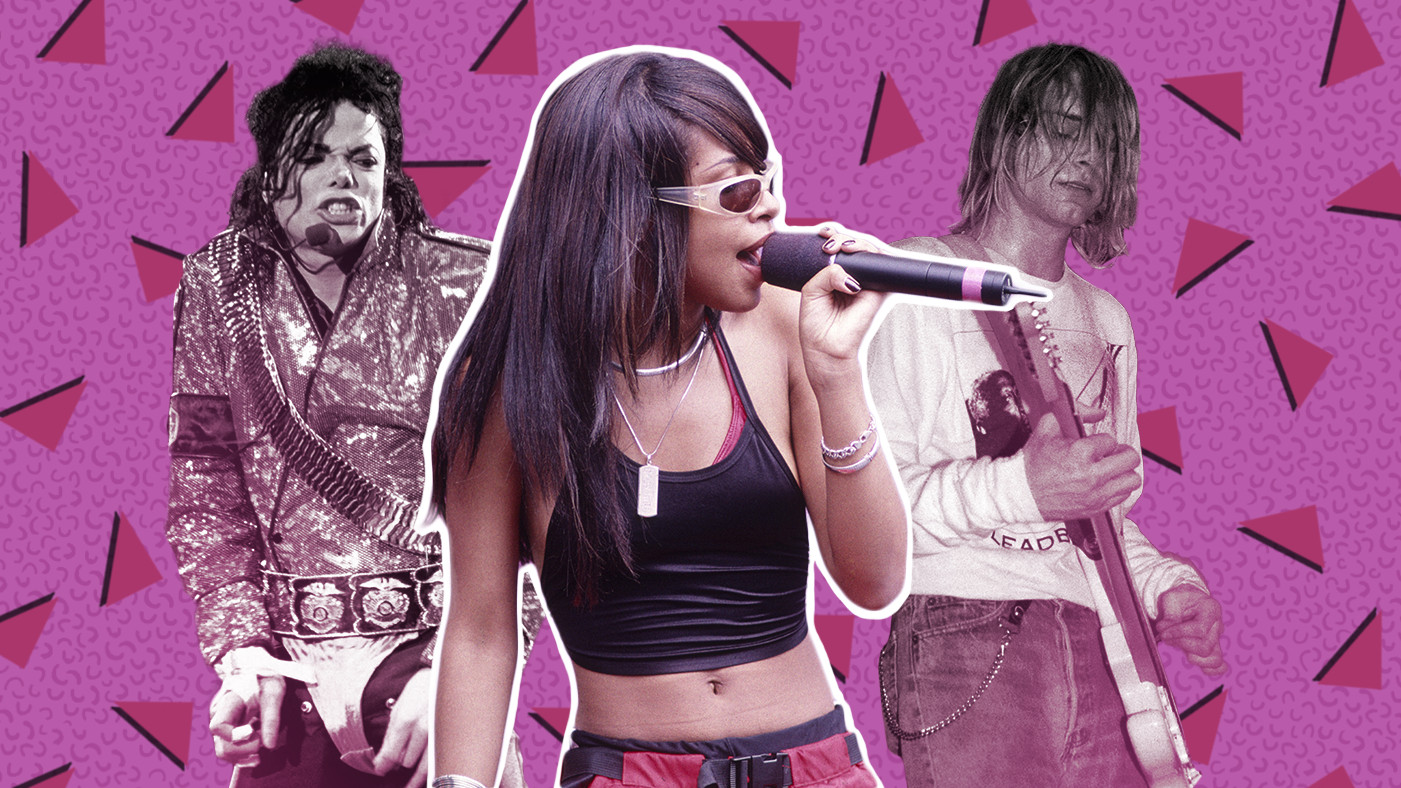 Sheryl Crow with blonde hair, wearing a blue denim shirt and jeans, playing a guitar and singing into a microphone on stage.
Sheryl Crow with blonde hair, wearing a blue denim shirt and jeans, playing a guitar and singing into a microphone on stage.
Sheryl Crow captivated audiences with “If It Makes You Happy,” particularly with the unforgettable line about scraping mold off bread. This lyric perfectly encapsulates the quintessential 90s vision of rock & roll stoner apathy and existential ennui. The song’s laid-back groove and relatable lyrics about finding contentment in simple pleasures resonated deeply with the decade’s slacker generation. “If It Makes You Happy” became a defining anthem of 90s alternative rock, showcasing Crow’s songwriting prowess and her ability to tap into the zeitgeist.
En Vogue, “Don’t Let Go (Love)” (1996)
En Vogue, the vocal powerhouse divas, delivered their steamiest slow jam with “Don’t Let Go (Love).” The song explores the complexities of love, heartbreak, and emotional turmoil with raw intensity and vocal virtuosity. The standout moment, “If I could wear your clothes… I’d pretend I was you… and looooose controoool!” perfectly captures the song’s passionate and dramatic core. “Don’t Let Go (Love)” solidified En Vogue’s status as queens of 90s R&B, showcasing their unparalleled vocal harmonies and their ability to convey deep emotion through song.
Helium, “XXX” (1994)
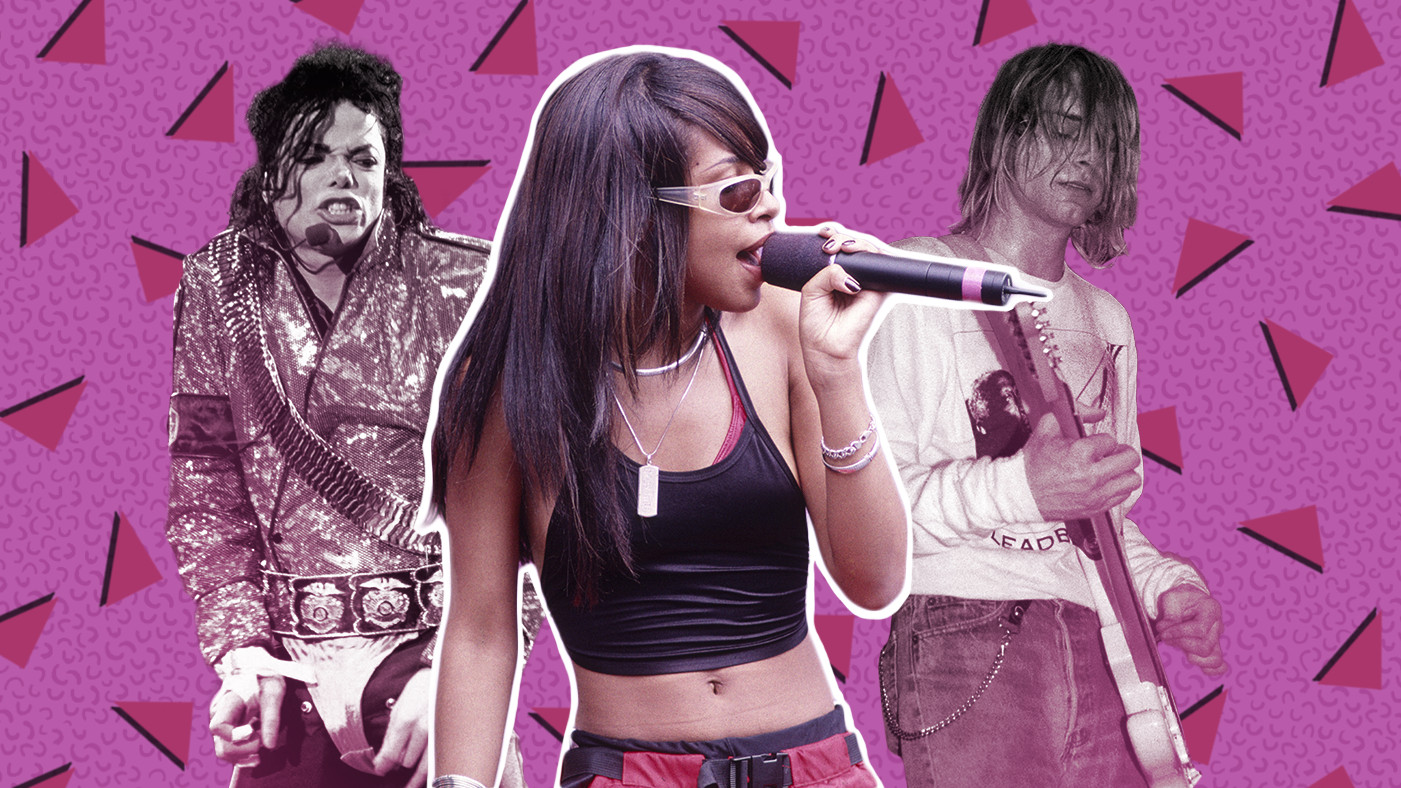 Mary Timony of Helium with dark hair, wearing a striped shirt, playing a guitar and singing into a microphone on stage.
Mary Timony of Helium with dark hair, wearing a striped shirt, playing a guitar and singing into a microphone on stage.
Guitar virtuoso Mary Timony, later of Wild Flag and Ex Hex, fronts Helium on “XXX,” a deceptively sweet ballad with a darkly humorous edge. The song’s lyrics warn of deadly consequences for street harassment, with Timony declaring that her guitar will be the instrument of vengeance. True to her word, her guitar unleashes a sonic assault while Timony delivers hilariously deadpan kiss-off lines: “My heart is a cab…your love is a fad…and you’re a draaag!” “XXX” is a unique and darkly comedic gem from the 90s indie rock scene, showcasing Timony’s distinctive songwriting and guitar prowess.
Foxy Brown With Jay Z, “I’ll Be” (1996)
Foxy Brown boldly declares, “I’m 2 live, nasty as I wanna be” in “I’ll Be,” while a young Jay-Z responds with a playful warning, “Don’t shake your sassy ass in front of me.” This collaboration marked Jay-Z’s ascendance onto the scene with Reasonable Doubt, and “I’ll Be,” featuring his teenage protégé Foxy Brown, was just one example of his early mastery. Who could have predicted that Jay-Z would remain at the pinnacle of hip-hop for decades to come? “I’ll Be” is a snapshot of hip-hop history in the making, capturing the raw talent and burgeoning star power of both Foxy Brown and Jay-Z in the mid-90s.
Underworld, “Born Slippy .Nuxx” (1996)
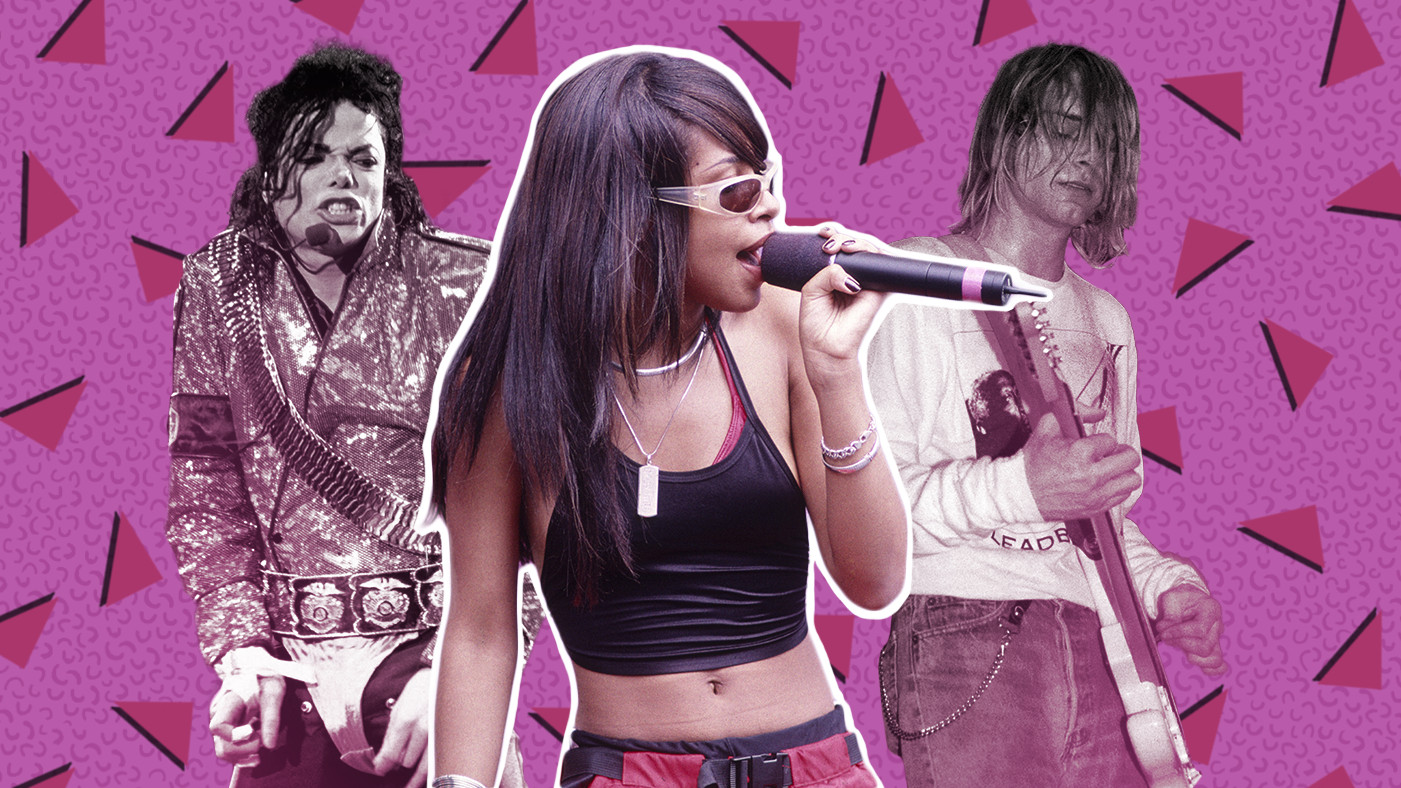 Underworld band members Karl Hyde and Rick Smith performing on stage with electronic equipment and lighting.
Underworld band members Karl Hyde and Rick Smith performing on stage with electronic equipment and lighting.
Underworld’s “Born Slippy .Nuxx” is a sonic explosion of techno sensory overload. Its popularity skyrocketed after its inclusion in the культовый film Trainspotting, particularly the unforgettable “lager lager lager lager” chant. However, given the track’s frenetic energy and pulsating rhythms, one might suspect that lager was among the least potent substances involved in its creation. “Born Slippy .Nuxx” became an anthem of the 90s rave scene and a defining track of electronic music’s mainstream breakthrough.
Sir Mix-A-Lot, “Baby Got Back” (1992)
“Baby Got Back” is, butt of course, an undeniable 90s classic. Virtually everyone in the English-speaking world can recite lines from this unapologetically pro-buttocks manifesto. Sir Mix-A-Lot’s celebration of curves and rejection of mainstream beauty standards resonated deeply with audiences, sparking conversations about body image and representation. “Baby Got Back” is more than just a novelty hit; it’s a cultural touchstone that challenged societal norms and remains hilariously quotable to this day.
Fiona Apple, “Paper Bag” (1999)
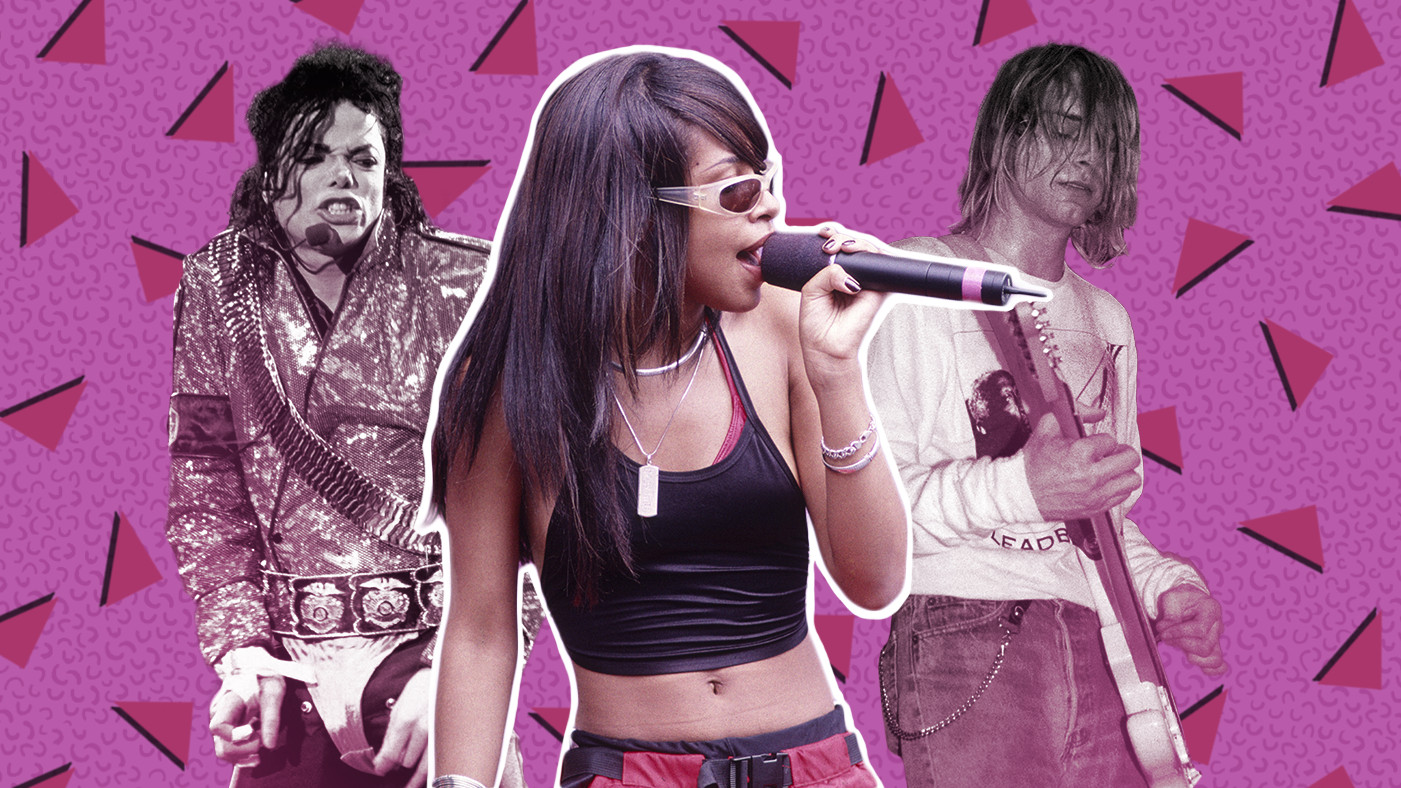 Fiona Apple with long dark hair, wearing a black dress, sitting at a piano and singing with intense emotion.
Fiona Apple with long dark hair, wearing a black dress, sitting at a piano and singing with intense emotion.
Fiona Apple’s “Paper Bag” encapsulates heartbreak and disillusionment with poignant simplicity. The lyric “She thought he was a man, but he was just a little boy” speaks volumes about the complexities of relationships and the often-painful realities of love. Apple’s raw vocals and introspective lyrics, combined with the song’s melancholic piano melody, create a deeply emotional and relatable experience. “Paper Bag” is a testament to Apple’s songwriting talent and her ability to capture the nuances of human emotion in her music, making it a standout ballad from the late 90s.
Weezer, “Pink Triangle” (1996)
Years before the term “overshare” became commonplace (perhaps first popularized by the Kirsten Dunst film Bring It On), Rivers Cuomo of Weezer took the concept to a new level with “Pink Triangle.” This love song, delivered with a dose of straight-dude cluelessness, explores themes of unrequited love and mistaken assumptions. Cuomo’s self-deprecating lyrics and Weezer’s signature blend of power-pop and alternative rock create a song that is both humorous and relatable. While Cuomo may have seen himself on par with Nirvana creatively, “Nirvana in his mind’s no good,” as the song subtly suggests, highlighting the band’s unique and often self-aware perspective within the 90s rock landscape.
Daft Punk, “Around the World” (1997)
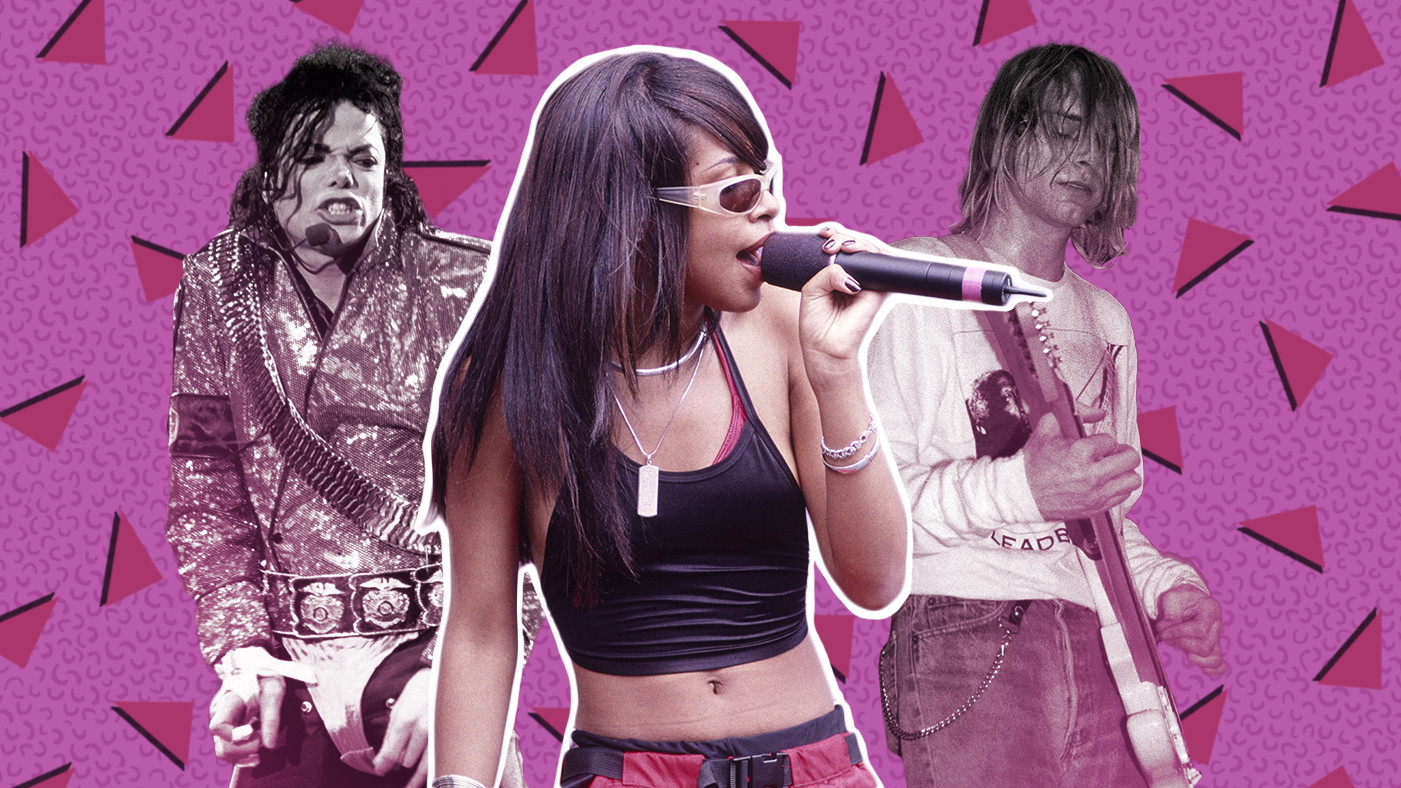 Daft Punk robots Guy-Manuel de Homem-Christo and Thomas Bangalter wearing helmets and black outfits, standing side-by-side in a dimly lit setting.
Daft Punk robots Guy-Manuel de Homem-Christo and Thomas Bangalter wearing helmets and black outfits, standing side-by-side in a dimly lit setting.
Daft Punk, the enigmatic French techno robots, propelled the Chic “Good Times” bassline into the future with “Around the World.” This track is a minimalist masterpiece, built around a repetitive yet hypnotic groove and the iconic filter-house sound that launched countless imitators. “Around the World” became a global phenomenon, solidifying Daft Punk’s status as pioneers of electronic music and defining the sound of late 90s dance music.
Natalie Imbruglia, “Torn” (1998)
There’s karaoke, and then there’s “Torn” karaoke. For many, 1998 remains the pinnacle of karaoke summers, and Natalie Imbruglia’s “Torn” was undoubtedly a major contributor. The song remains an enduring tear-jerker, even though considering Imbruglia’s celebrity romantic history, one realizes she probably doesn’t actually need anyone’s shoulder to cry on. “Torn” is a quintessential 90s pop ballad, showcasing Imbruglia’s emotive vocals and relatable lyrics about heartbreak, making it a karaoke staple and a beloved song of the decade.
Harvey Danger, “Flagpole Sitta” (1998)
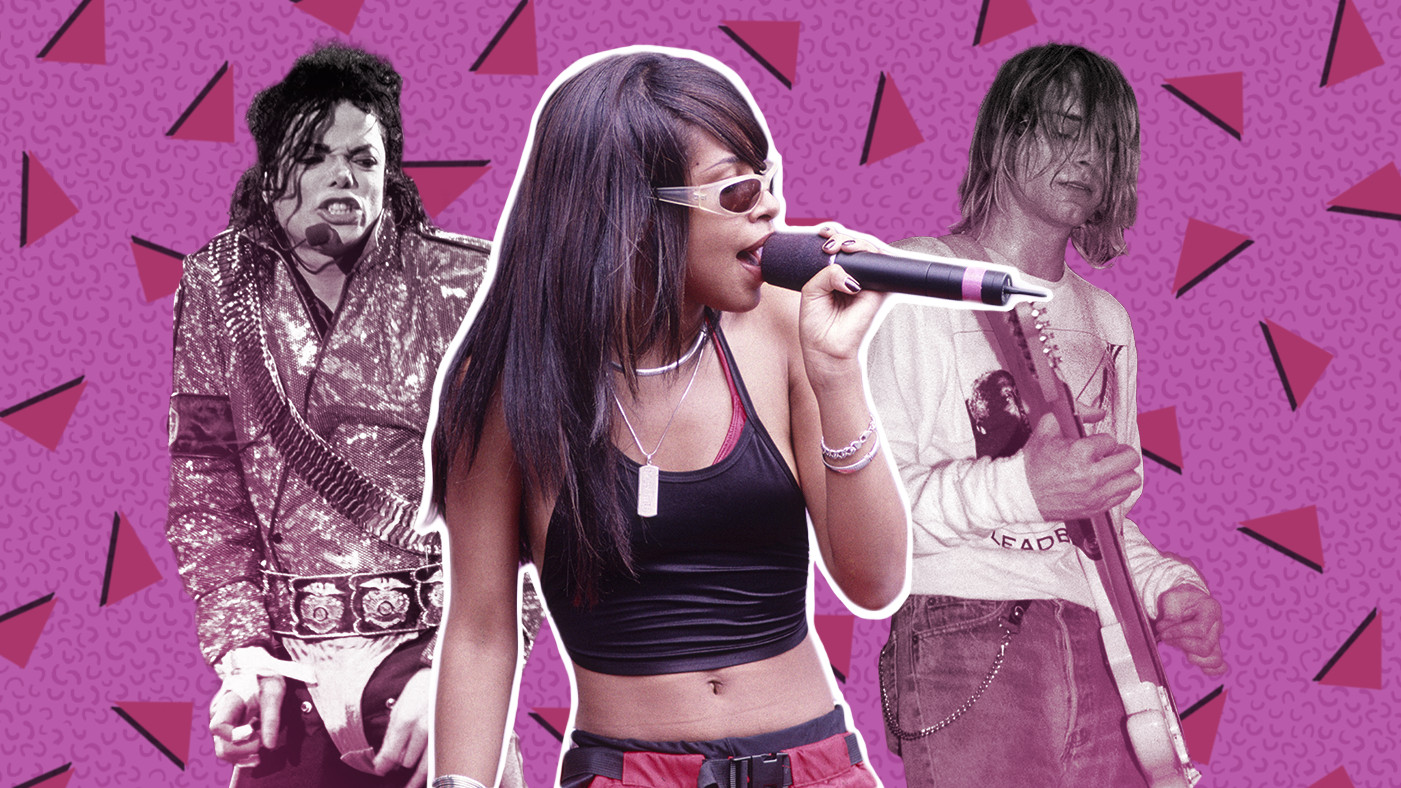 Harvey Danger band members Jeff Lin, Sean Nelson, Aaron Huffman, and Evan Sult, standing together and looking at the camera in a casual outdoor setting.
Harvey Danger band members Jeff Lin, Sean Nelson, Aaron Huffman, and Evan Sult, standing together and looking at the camera in a casual outdoor setting.
Just as there’s karaoke and then there’s “Torn” karaoke, Harvey Danger’s “Flagpole Sitta” occupies a unique space in 90s karaoke culture. The lyrics “I wanna publish zines and rage against machines” perfectly encapsulate the era’s DIY ethos and anti-establishment sentiment. However, the line “I don’t even own a TV” became a marker of hipster irony that quickly faded as the 90s drew to a close. “Flagpole Sitta” is a witty and culturally relevant anthem of the late 90s, capturing the decade’s slacker spirit and its evolving cultural landscape.
Aaliyah, “Are You That Somebody” (1998)
“Are You That Somebody” is one of Timbaland’s most experimental and avant-garde productions, yet Aaliyah effortlessly transforms it into a bonafide pop hit with her cool-as-ice vocals. The track’s unconventional beat, punctuated by baby coos, is a testament to Timbaland’s innovative production style, while Aaliyah’s smooth delivery and undeniable charisma elevate the song to another level. “Are You That Somebody” is a groundbreaking example of 90s R&B, pushing genre boundaries and solidifying Aaliyah’s status as a rising star.
Oasis, “Wonderwall” (1995)
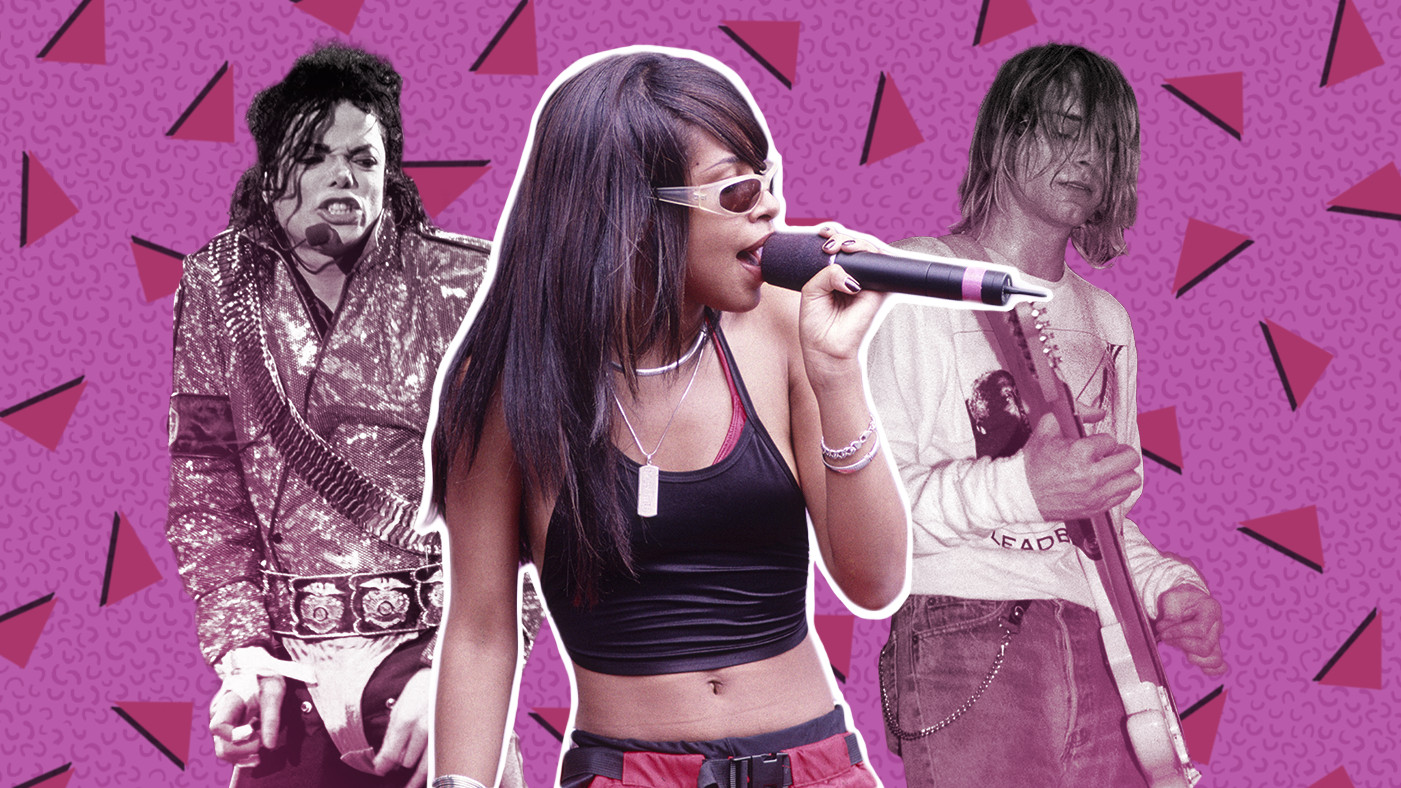 Liam and Noel Gallagher of Oasis performing on stage with guitars and microphones in a concert setting.
Liam and Noel Gallagher of Oasis performing on stage with guitars and microphones in a concert setting.
Noel Gallagher of Oasis later admitted he had no idea what a “wonderwall” actually was. Neither did anyone else, for that matter. But it didn’t matter then, and it doesn’t matter now. “Wonderwall” possesses an anthemic quality that instantly transforms any space into a raucous, slightly out-of-tune pub singalong. This Britpop classic, despite its lyrical ambiguity, became a global phenomenon, showcasing Oasis’s songwriting prowess and their ability to connect with audiences on an emotional level. “Wonderwall” remains a defining song of the 90s and a karaoke favorite worldwide.
Mobb Deep, “Shook Ones Pt. II” (1995)
“Shook Ones Pt. II” by Mobb Deep is often considered the hip-hop equivalent of The Rolling Stones’ “Gimme Shelter,” a stark and unflinching report from the urban combat zone. Queensbridge duo Prodigy and Havoc paint a vivid picture of a world where vulnerability is a fatal flaw, where fear, or any emotion for that matter, can get you killed because “there ain’t no such thing as halfway crooks.” Mobb Deep were the grittiest and most hardcore of all the mid-90s East Coast hip-hop crews, and their signature hit has lost none of its chilling power over time. “Shook Ones Pt. II” is a masterpiece of 90s hip-hop, showcasing Mobb Deep’s lyrical skill and their unflinching portrayal of street life.
Smashing Pumpkins, “1979” (1995)
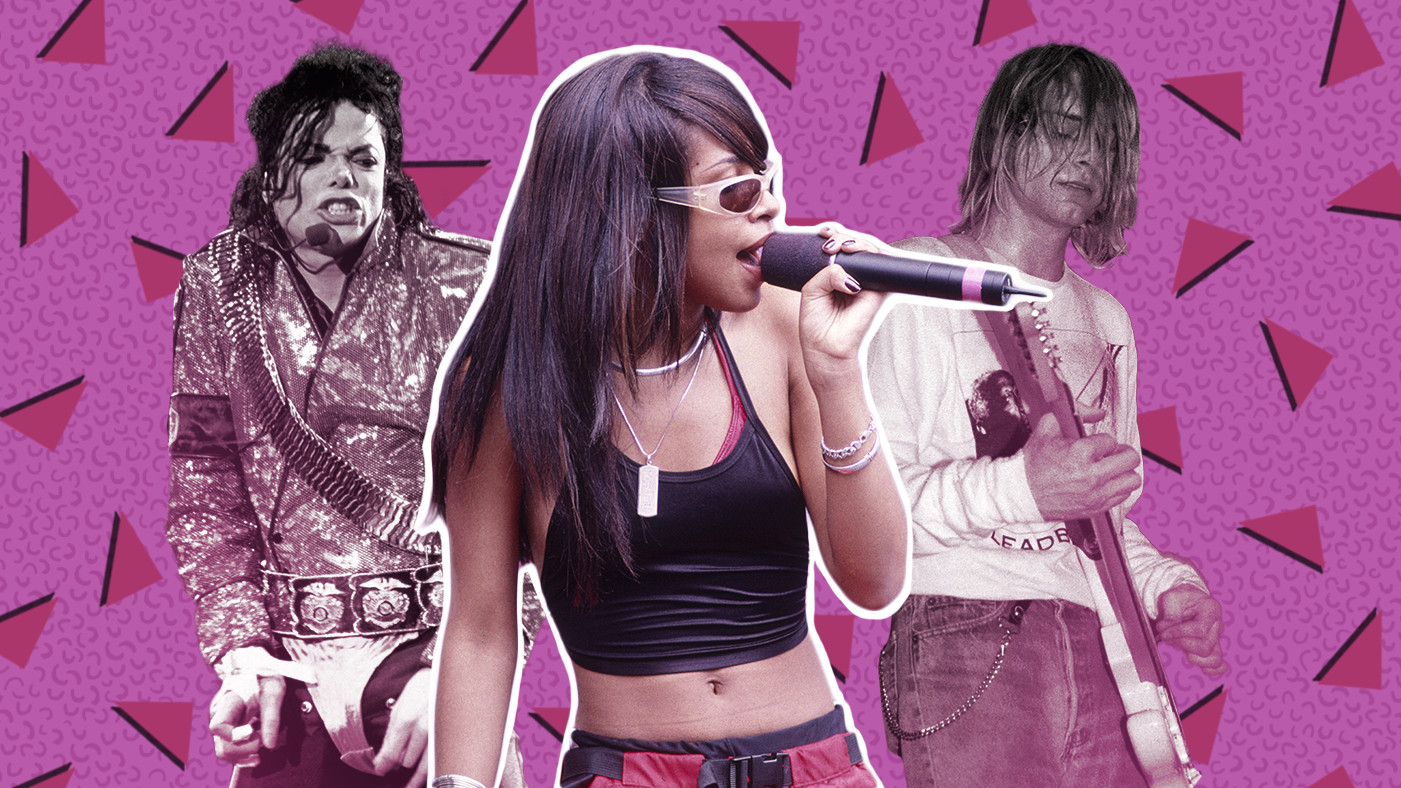 Billy Corgan of Smashing Pumpkins with a shaved head, wearing a black outfit, playing a guitar and singing into a microphone on stage.
Billy Corgan of Smashing Pumpkins with a shaved head, wearing a black outfit, playing a guitar and singing into a microphone on stage.
Billy Corgan’s “1979” is an evocative ode to the bittersweet pangs of a generic suburban Midwestern adolescent summer. Built around James Iha’s shimmering guitar hook, the song possesses a universal appeal that transcended even Corgan-phobes. Famously covered by Pavement, “1979” captures the feeling of youthful yearning and fleeting moments of freedom. The lyrics “Faster than the speed of sound, faster than we thought we’d go” perfectly encapsulate the song’s themes of nostalgia and the passage of time. “1979” is a defining track of 90s alternative rock, showcasing the Smashing Pumpkins’ ability to blend introspective lyrics with anthemic melodies.
Beck, “Loser” (1993)
Beck emerged as the poet of his generation, and the 90s certainly had a plethora of them. (The poet-per-generation ratio reached unprecedented levels in the 90s). “Loser” arrived with its bluesy guitar riff, beatbox rhythms, a leaf blower sound effect, and a music video that playfully infringed on George Lucas’s copyrights. “Loser” became an instant slacker anthem, celebrating irony, absurdity, and a general sense of detachment. Beck’s genre-bending approach and his wry lyrical style made him a defining artist of the 90s alternative scene. Praise the gods and pass the Cheez Whiz, indeed.
Whitney Houston Feat. Faith Evans and Kelly Price, “Heartbreak Hotel” (1998)
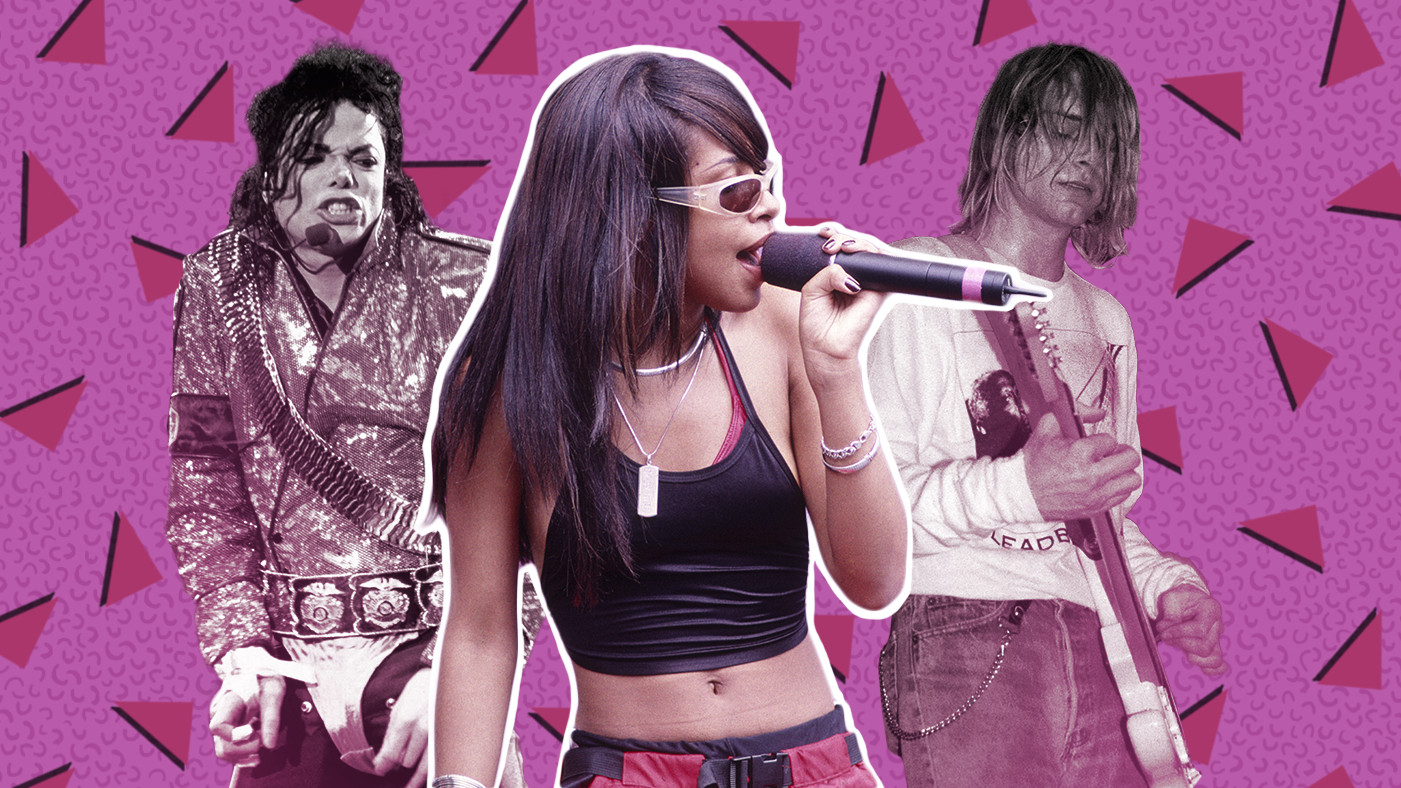 Whitney Houston in a black dress, with short hair, singing into a microphone on stage with dramatic lighting.
Whitney Houston in a black dress, with short hair, singing into a microphone on stage with dramatic lighting.
Whitney Houston, joined by Faith Evans and Kelly Price, delivers a powerful kiss-off to a trifling love interest in “Heartbreak Hotel.” Houston’s vocals build from hushed whispers to soaring high notes, a vocal performance that embodies sweet revenge. At the time, “Heartbreak Hotel” sounded like the dawn of a new era for Whitney, a reinvention and a fresh start. Sadly, it ultimately marked a turning point, becoming more of an end than a beginning. “Heartbreak Hotel” remains a testament to Whitney Houston’s vocal prowess and her ability to convey raw emotion through song, a bittersweet reminder of her enduring talent.
Garbage, “Queer” (1995)
Garbage, fronted by Shirley Manson, blended eerie torch vocals with alt-rock superproducer Butch Vig’s signature studio effects in “Queer.” Manson’s vocals, whispering the provocative lines “You can touch me if you want/But you can’t stop,” are both alluring and unsettling. Her voice gets under your skin and lingers there, creating an atmosphere of intrigue and unease. “Queer” is a standout track from 90s alternative rock, showcasing Garbage’s unique blend of industrial, electronic, and rock influences, and Manson’s captivating stage presence.
Beastie Boys, “Sure Shot” (1994)
 Beastie Boys Ad-Rock, MCA, and Mike D standing together in a group, with a graffiti-covered wall in the background.
Beastie Boys Ad-Rock, MCA, and Mike D standing together in a group, with a graffiti-covered wall in the background.
The Beastie Boys, with their trademark checked heads and irreverent style, flex their lyrical muscles in “Sure Shot.” Adam Yauch’s shout-out “to all the mothers and the sisters and the wives and friends” is a testament to the band’s inclusive spirit and their respect for women. “Sure Shot” is a classic Beastie Boys track, showcasing their signature blend of hip-hop, funk, and punk influences, and their enduring appeal as innovators of 90s music. Because you can’t, you won’t, and you don’t stop.
Sleater-Kinney, “Get Up” (1999)
Sleater-Kinney, the Portland punk goddesses, perfectly capture the feeling of isolation and disorientation in “Get Up.” Yet, the song is not about surrender; it’s about defiance. With guitars that sound like a cascade of stars falling into the universe, Sleater-Kinney refuse to go quietly. “Get Up” is a powerful anthem of resilience and self-empowerment, showcasing the band’s raw energy and their ability to channel personal struggles into potent and impactful music. It’s a highlight of 90s riot grrrl and indie rock, demonstrating Sleater-Kinney’s enduring influence.
Outkast, “Rosa Parks” (1998)
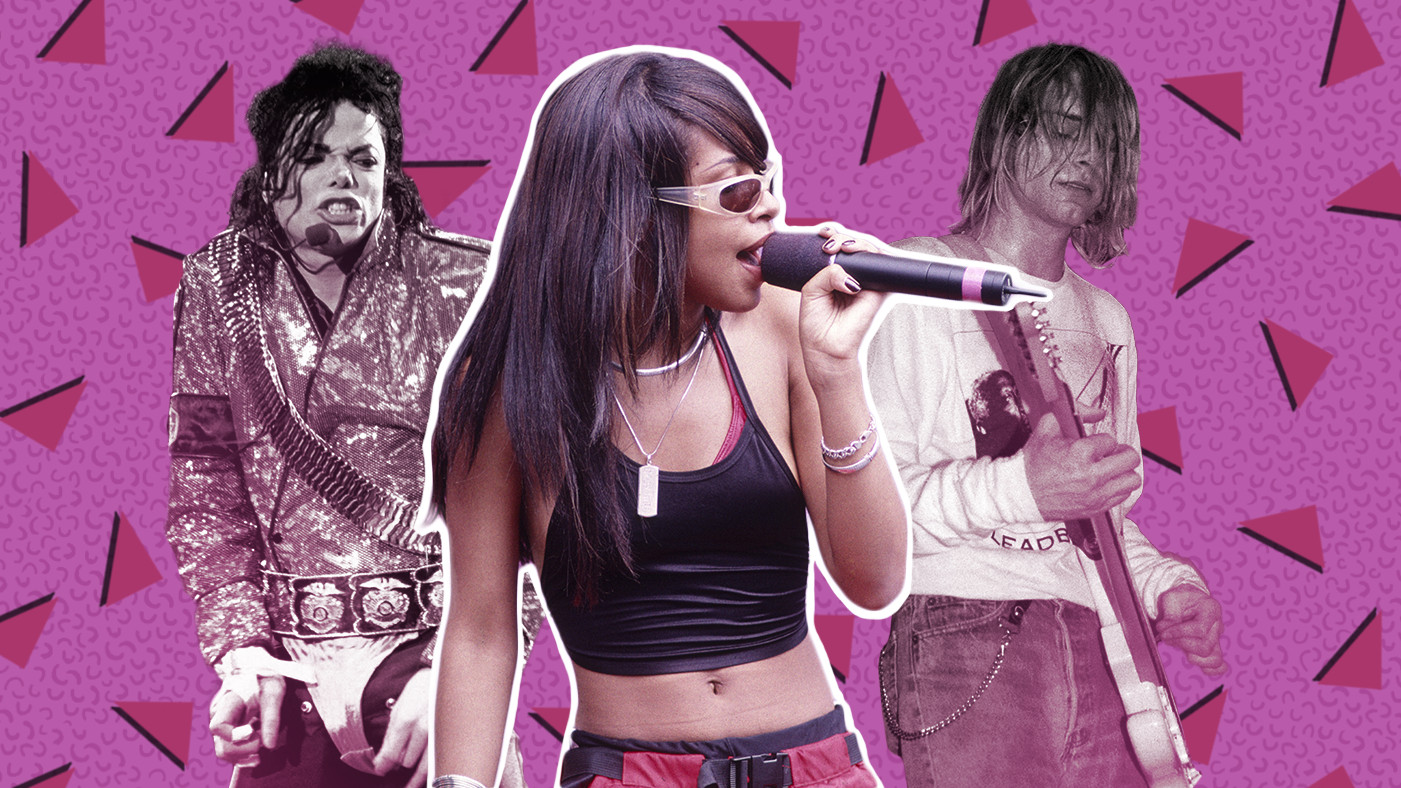 Outkast members André 3000 and Big Boi standing side-by-side in a stylish outdoor setting with greenery.
Outkast members André 3000 and Big Boi standing side-by-side in a stylish outdoor setting with greenery.
Outkast’s “Rosa Parks” is the quintessential Dirty South booty-shaking jam of the 90s, complete with the decade’s most memorable harmonica solo (apologies to Blues Traveler!). This track introduced much of the country to the unique sound that Big Boi and André 3000 were brewing in the dirty-dirty ATLien nation. It also marked the mainstream introduction of the word “crunk.” “Rosa Parks” remains sonically innovative and utterly infectious, a testament to Outkast’s groundbreaking approach to hip-hop and their lasting impact on 90s music and beyond.
R.E.M. “Nightswimming” (1992)
Predicting in 1989 that R.E.M.’s best work was still ahead of them, specifically a run of four stone-cold classic albums, would have seemed unlikely. Yet, R.E.M. defied expectations. “Nightswimming” is a bittersweet piano reverie, a nostalgic reflection on skinny-dipping in the Georgia pines. Michael Stipe’s vocals are filled with a poignant longing to hold onto precious memories before they fade and are replaced by the mundane realities of everyday life. “Nightswimming” is a hauntingly beautiful ballad, showcasing R.E.M.’s lyrical depth and their ability to evoke powerful emotions with understated instrumentation. It’s a standout track from their incredible 90s output.
Ol’ Dirty Bastard, “Brooklyn Zoo” (1995)
 Ol' Dirty Bastard with braids and sunglasses, wearing a colorful jacket, rapping into a microphone with a crowd blurred in the background.
Ol' Dirty Bastard with braids and sunglasses, wearing a colorful jacket, rapping into a microphone with a crowd blurred in the background.
The Wu-Tang Clan’s universe was designed for album-length explorations of true mathematics, but “Brooklyn Zoo” was their most successful and undeniably funniest foray into radio-friendly territory. Ol’ Dirty Bastard, a.k.a. Big Baby Jesus, unleashes his signature chaotic energy over RZA’s broken piano keys. “Brooklyn Zoo” is proof that Wu-Tang Clan’s music, in all its unconventional glory, truly is for the children (and everyone else). It’s a standout track from 90s hip-hop, showcasing ODB’s unique charisma and the Wu-Tang Clan’s innovative sound.
The Breeders, “Cannonball” (1993)
Kim Deal emerged from the ashes of alt-rock heroes the Pixies with The Breeders, featuring her twin sister Kelley on guitar. “Cannonball” is a freewheeling, shaggy-headed, big-hearted mess of a song. It became one of the most wonderfully bizarre radio hits of the 90s, and perhaps any decade before it. “Cannonball” is a testament to Kim Deal’s songwriting talent and The Breeders’ unique sound, blending indie rock sensibilities with catchy melodies and a touch of quirky charm. It’s a true 90s alternative rock classic.
Hole, “Doll Parts” (1994)
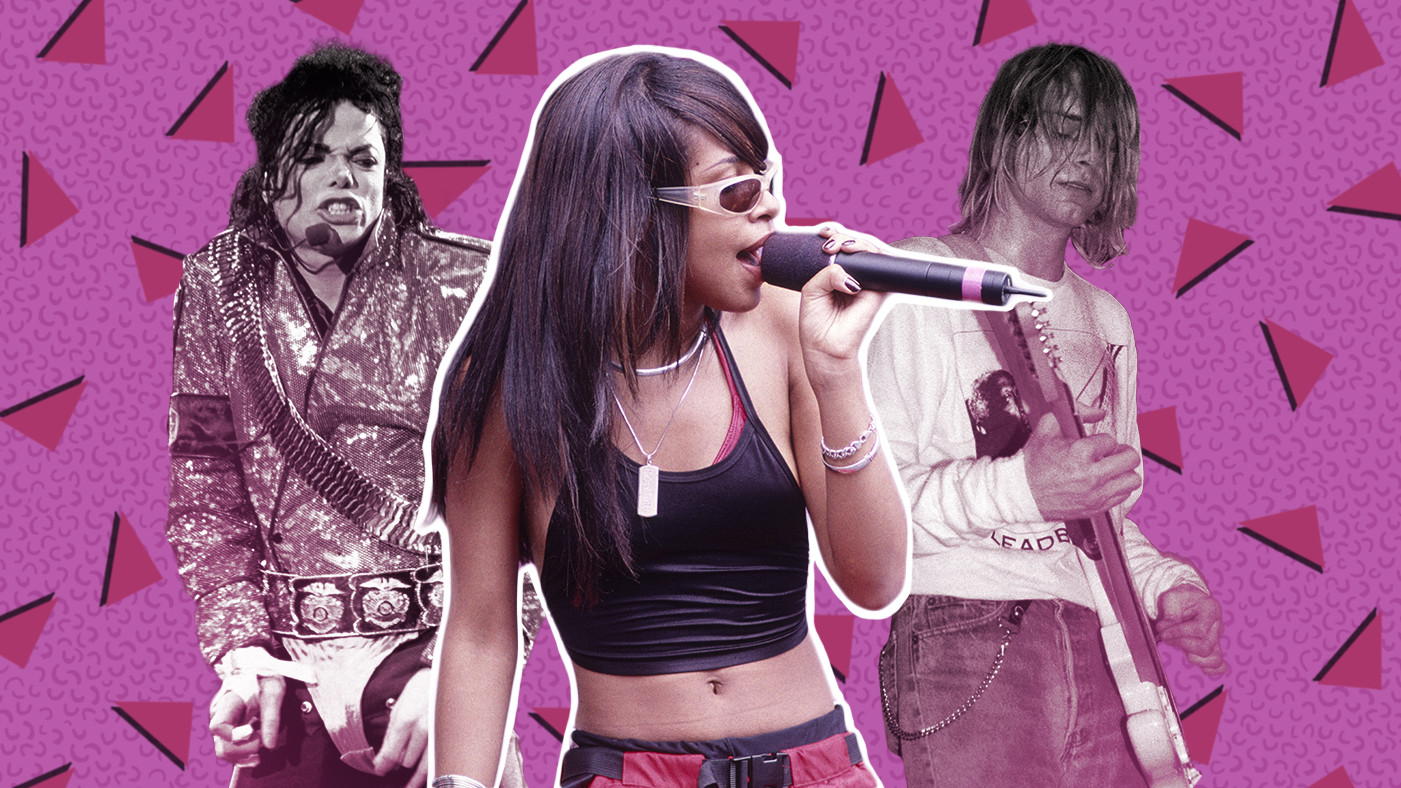 Courtney Love of Hole with blonde hair and a slip dress, singing and gesturing emotionally into a microphone on stage.
Courtney Love of Hole with blonde hair and a slip dress, singing and gesturing emotionally into a microphone on stage.
“Doll Parts” is arguably Courtney Love’s finest moment as a songwriter. The song’s raw vulnerability and emotional honesty resonate deeply, exploring themes of insecurity and the pressures of female identity. The poignant imagery of a mother listening to the song and crying alone in her car evokes a sense of intergenerational pain and shared female experience. “Doll Parts” is a powerful and emotionally resonant ballad, solidifying Hole’s place in 90s alternative rock and showcasing Love’s songwriting depth. Someday you will ache like she aches.
TLC, “No Scrubs” (1999)
“No Scrubs” by TLC is a direct address, son – and it’s talking to you. The crazy-sexy-cool Atlanta trio closed out the decade they dominated with a hilarious and empowering rant against “scrubs,” those undesirable men who are all talk and no substance. However, the song’s message extends beyond just street harassment, becoming a broader anthem of female empowerment and self-respect. “No Scrubs” is a quintessential late 90s R&B track, showcasing TLC’s signature sass and their ability to deliver socially conscious messages with infectious grooves. Burn on, Left Eye.
Liz Phair, “Fuck and Run” (1993)
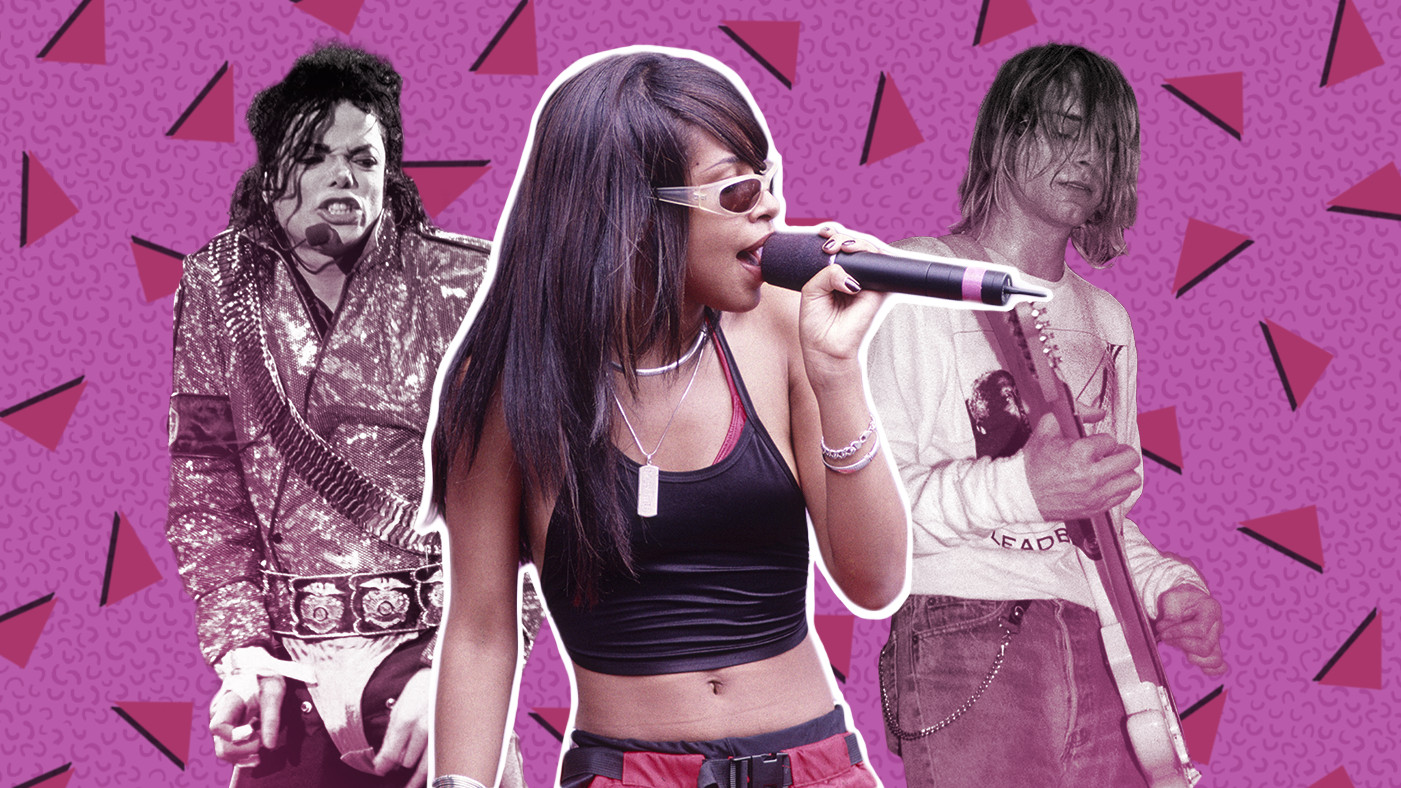 Liz Phair with blonde hair, wearing a white t-shirt and jeans, playing a guitar and singing into a microphone in a casual setting.
Liz Phair with blonde hair, wearing a white t-shirt and jeans, playing a guitar and singing into a microphone in a casual setting.
Believe it or not, we thought we had problems in 1993. Liz Phair’s “Fuck and Run” testifies to the transient nature of relationships and the often-disposable nature of men, delivered in a plainspoken voice that cuts straight to the heart. The song’s unfortunately timeless plot remains relevant even today. The same old story: boys only want love if it’s torture. “Fuck and Run” is a raw and honest portrayal of female experience in the 90s, showcasing Phair’s lyrical honesty and her ability to connect with listeners on a deeply personal level.
Pulp, “Common People” (1995)
Jarvis Cocker of Pulp possesses more soul and swagger simply exhaling a puff of smoke than most singers manage to convey in their entire careers. “Common People” is a Britpop masterpiece, overflowing with sex, sarcasm, and a touch of despair. But mostly sex. Cocker’s witty lyrics and Pulp’s infectious energy create a song that is both intellectually stimulating and irresistibly danceable. “Common People” is a defining track of Britpop and a highlight of 90s alternative music, showcasing Pulp’s unique blend of social commentary and musical brilliance.
Missy “Misdemeanor” Elliott, ”The Rain (Supa Dupa Fly)” (1997)
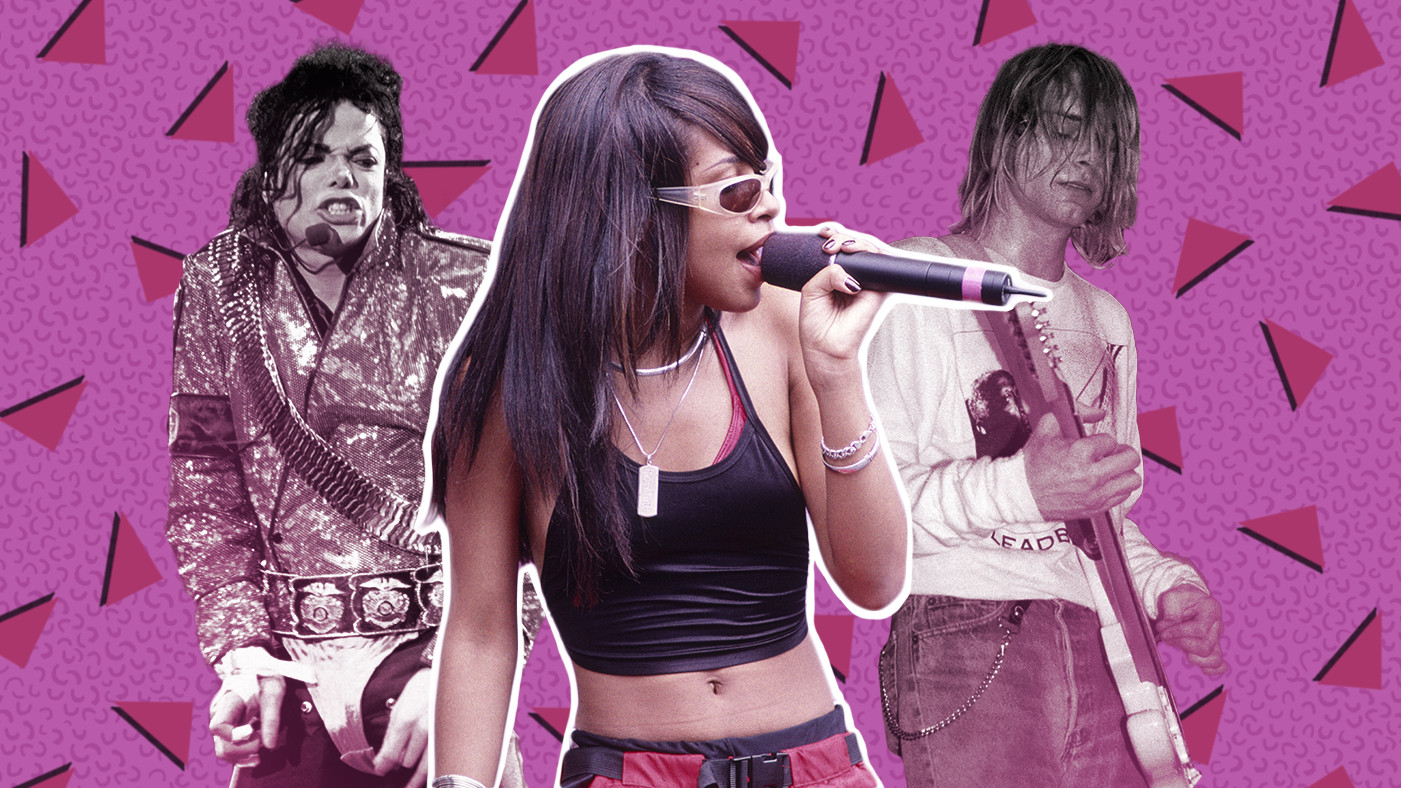 Missy Elliott in an inflatable black trash bag suit, with futuristic sunglasses, rapping and gesturing in a music video setting.
Missy Elliott in an inflatable black trash bag suit, with futuristic sunglasses, rapping and gesturing in a music video setting.
“The Rain (Supa Dupa Fly)” introduced the world to Missy Elliott and Timbaland, the dynamic duo who would go on to dominate the late 90s and beyond. Together, they warped a 70s R&B sample into a long, steamy Southern night, complete with cricket chirps and rolling storm clouds. Missy’s innovative rhymes and Timbaland’s groundbreaking production style created a sound that was unlike anything else in 90s hip-hop. “The Rain (Supa Dupa Fly)” is a genre-bending masterpiece, solidifying Missy Elliott’s status as a visionary artist. Oh, Missy, try to maintain.
Pavement, “Gold Soundz” (1994)
“Gold Soundz” by Pavement encapsulates all the boyish heart-on-sleeve urgency of The Beach Boys’ Pet Sounds distilled into three minutes of indie rock perfection. Stephen Malkmus and his slacker crew waste not a single second of this song – every guitar twang, every breathy mumble contributes to a note-perfect emotional surge. Almost like they actually care or something. “Gold Soundz” is a quintessential Pavement track, showcasing their lo-fi aesthetic, Malkmus’s cryptic lyrics, and the band’s undeniable melodic genius. It’s a cornerstone of 90s indie rock.
Dr. Dre and Snoop Dogg, “Nuthin’ but a ‘G’ Thang” (1992)
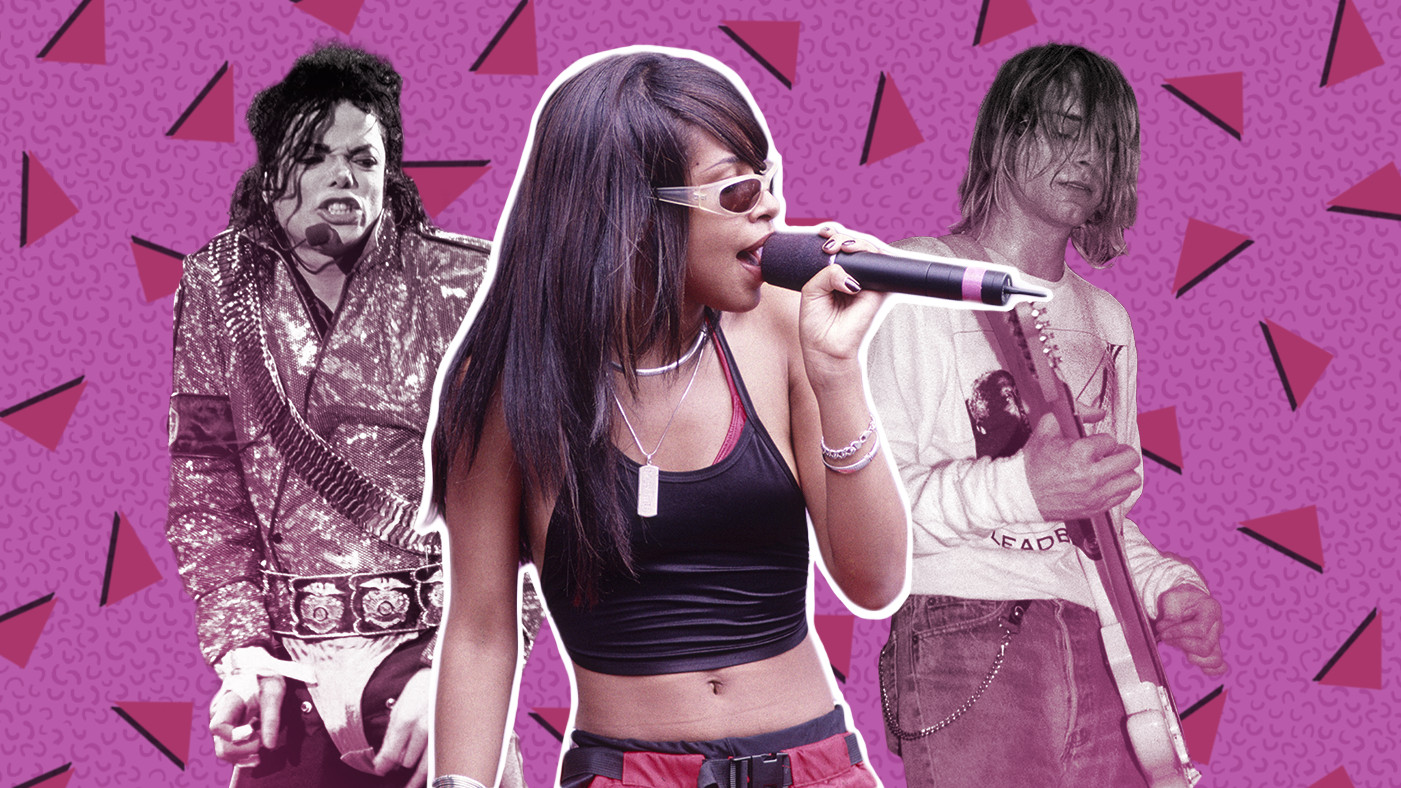 Dr. Dre and Snoop Dogg in sunglasses and casual outfits, rapping and gesturing in a lowrider car in a sunny California setting.
Dr. Dre and Snoop Dogg in sunglasses and casual outfits, rapping and gesturing in a lowrider car in a sunny California setting.
Dr. Dre, a producer with an already legendary career behind him with N.W.A., returned mightier than ever in 1992 with “Nuthin’ but a ‘G’ Thang.” With significant help from the fresh-faced Snoop Dogg, this track redefined West Coast hip-hop and propelled G-funk into the mainstream. The iconic groove makes any car bounce and bump, with a bassline as real as “Real Deal” Holyfield. “Nuthin’ but a ‘G’ Thang” is a foundational track of 90s hip-hop, launching Snoop Dogg’s career and solidifying Dr. Dre’s status as a production icon.
Bikini Kill, “Rebel Girl” (1993)
Bikini Kill, the riot grrrl pioneers led by the ferocious Kathleen Hanna, along with their “token boy guitar player,” entered a recording studio with Joan Jett and emerged with “Rebel Girl.” This seven-inch single delivered on every radical promise punk rock ever made. “Rebel Girl” is an anthem for the neighborhood girl with the revolution in her hips. Rock & roll with political and emotional muscle? How bizarrely refreshing. “Rebel Girl” is a defining track of the riot grrrl movement and a powerful feminist anthem of the 90s.
Notorious B.I.G. With Mase and Puff Daddy, “Mo Money Mo Problems” (1997)
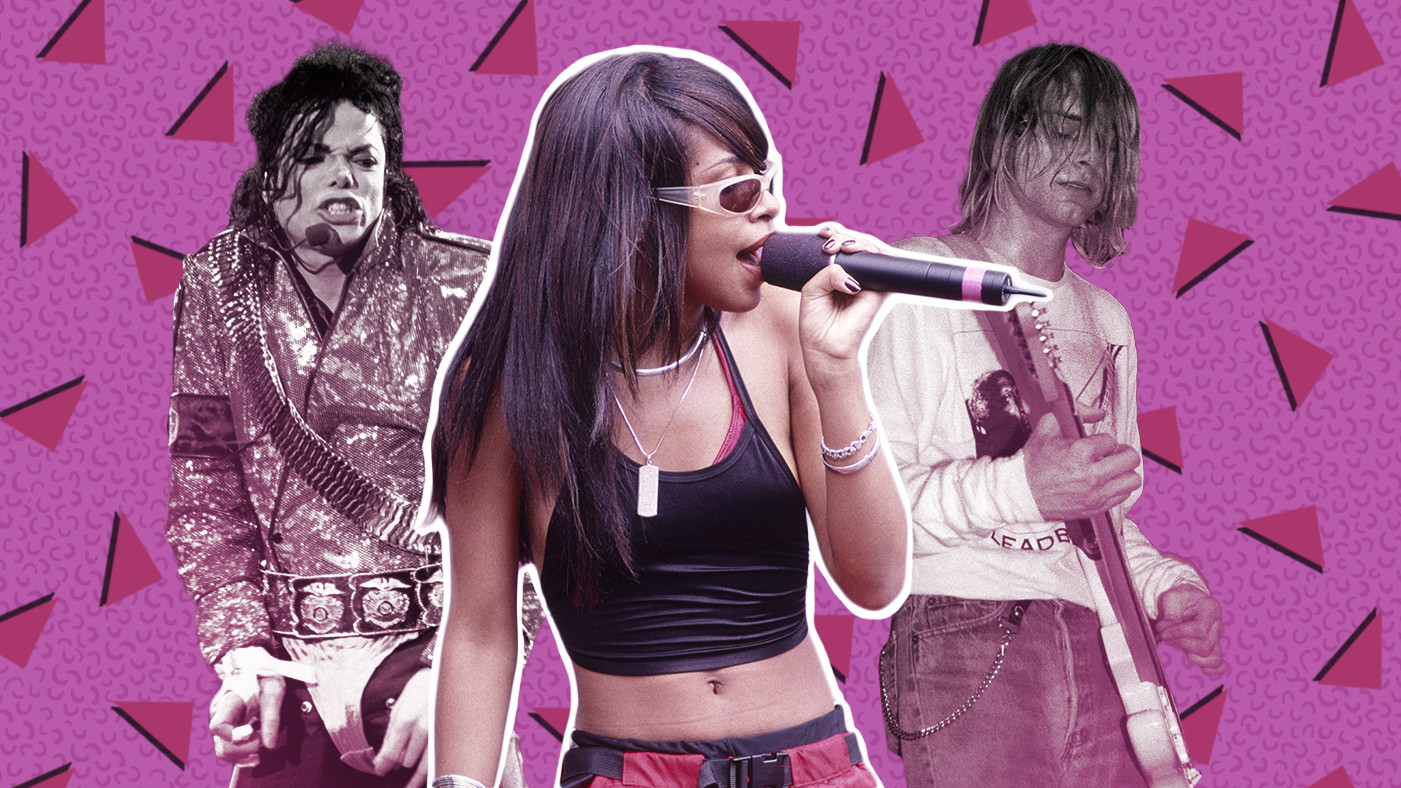 Notorious B.I.G. in a white suit and hat, rapping and gesturing in a brightly lit music video setting with other people dancing.
Notorious B.I.G. in a white suit and hat, rapping and gesturing in a brightly lit music video setting with other people dancing.
The late, great Notorious B.I.G. possessed more soul and swagger simply clearing his throat before his verse than most rappers have in their entire catalogs. “Mo Money Mo Problems,” featuring Mase and Puff Daddy, became an accidental epitaph for Biggie, reaching Number One on the charts shortly after his tragic death. Yet, the song makes him sound impossibly alive, his charisma and lyrical brilliance undiminished. “Mo Money Mo Problems” is a bittersweet classic of 90s hip-hop, a testament to Biggie’s enduring legacy. Burning question: Did Mase ever get to see his name on a blimp?
Blackstreet, “No Diggity” (1996)
“No Diggity” by Blackstreet is a utopian celebration of the rump-shaking essence of American music. Virginia-via-Harlem beatmaster Teddy Riley masterfully blended doo-wop, Dr. Dre influences, old-school R&B harmonies, a rumbling piano, and a sample of acoustic blues guitar from Bill Withers. We are all living in the future envisioned by this song, and we are all the luckier for it. “No Diggity” is a genre-bending masterpiece of 90s R&B, showcasing Blackstreet’s vocal harmonies and Teddy Riley’s innovative production.
Nirvana, “Smells Like Teen Spirit” (1991)
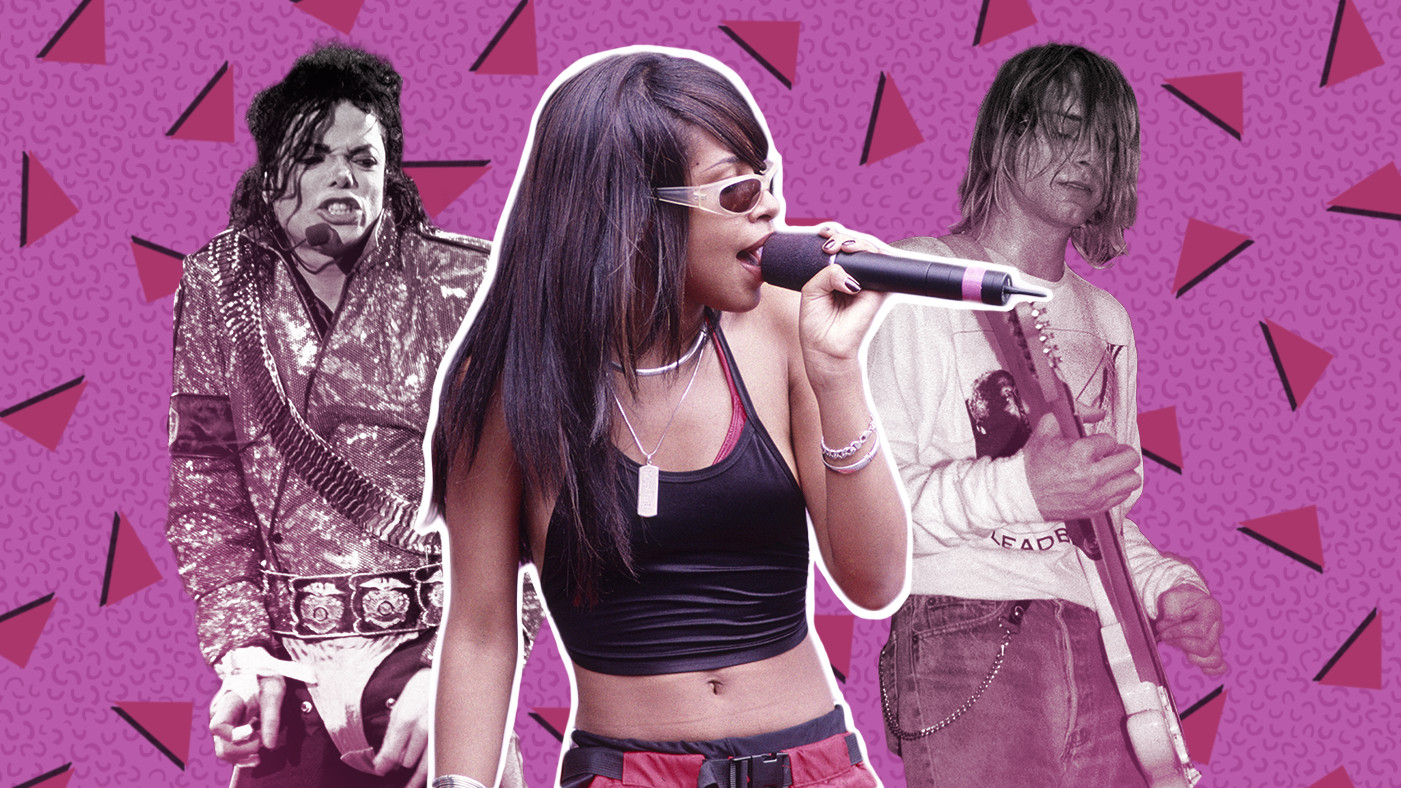 Nirvana band members Kurt Cobain, Krist Novoselic, and Dave Grohl performing on stage with instruments and intense energy.
Nirvana band members Kurt Cobain, Krist Novoselic, and Dave Grohl performing on stage with instruments and intense energy.
“Smells Like Teen Spirit” is the song that detonated across the world, changing the musical landscape forever. It defied all conventional rules of music creation, cramming an unprecedented amount of raw emotion into four simple chords and a deliberately sloppy guitar solo. It was the song that kicked the future in the teeth, shattering complacency and challenging the status quo. “Smells Like Teen Spirit” was Kurt Cobain’s challenge to the audience – and after all these years, that challenge still resonates. It remains the ultimate anthem of 90s grunge and a defining song of the decade.
The 1990s were a decade of boundless musical innovation and diversity. From grunge to hip-hop, pop to electronica, the top songs of the 90s reflect a vibrant and transformative era in music history. This list of 50 essential tracks offers just a glimpse into the decade’s rich tapestry of sounds, inviting listeners to rediscover the music that defined a generation and continues to inspire today. Explore these iconic songs and delve deeper into the vast and exhilarating world of 90s music.

